Rediscovering my passion for photography
In the mid ‘70s, my dad walked into a department store and, a few minutes later, walked out with a shiny new Argus TTL 35mm SLR camera. It wasn’t an expensive camera, but it did have a handy through-the-lens metering system, making it easy to measure light and make a proper exposure. No handheld meter necessary.
With the Argus in hand, he was all set to take pictures of his newborn son – me.
My dad was quite protective of his camera. It was strictly “hands off” for me and my younger sister. But from time to time, we got to see the colourful photos he made whenever my mom could convince him to set up the slide projector.
He’d taken numerous photos in the early years: camping trips, visits to the zoo, family gatherings. He also experimented with different screw-on filters like split-focus, soft focus and starburst. But as time went by, he lost interest and the camera sat unused in the dark, dusty basement.
On my eighteenth birthday he said, “This is yours now. Happy birthday, Jess.” I was elated. For about a year, I’d been toying around with a cheap point and shoot camera. Now, I had my dad’s prized SLR and I was eager to learn.
RIGHT: Ricoh GR III . F/4.0 . 1/30” . ISO 125
“Here’s how you control the aperture,” he said. “And this dial here lets you change the shutter speed.” Before long, I was looking to expand the camera’s capabilities by adding new focal lengths. With money earned working part-time, I sprung for a 28mm wide angle lens. Then I bought a cheap telephoto zoom, which turned out to be the softest lens I’ve ever seen. Pure junk!
Over the next two years, my passion for photography continued to grow. At the time, I was working at Earl’s, a Canadian-based chain of restaurants. I started making portraits of my restaurant friends. Occasionally, I was asked to do glamour shots by girls looking to try their hand at modeling. Manual focus was making my life difficult, so I started saving my pennies for a better camera.
I had my eye on the Canon EOS Elan II and an EF 28-105mm F3.5-4.5 USM II lens which, at the time, would cost me about $1,500 CDN. But, I had a problem. I only made $7.25 an hour. So, I saved, and saved, and saved. After many months, I’d finally squirrelled enough away to afford the camera.
Finally, I had a brand new, autofocus camera and a flexible zoom lens. Word got around Earl’s that I was into photography and, before long, more people were asking if I would take their picture. I still had so much to learn, so I asked my friend Elmer to come along on some photo shoots. He was quite advanced and was shooting mostly medium format.
The negatives from his Mamiya 645 Pro TL blew me away! He also had his own darkroom. Before long, we were hanging out regularly, developing black and white prints under the red glow of the darkroom light.
RIGHT: Canon 6D MK II . Canon EF70-300mmF4-5.6 @220mm . F/5.0 . 1/125” . ISO 1280
Elmer and I became fast friends and, eventually, business partners. In 1997, we formed a company with two other partners, Eric and Reuben. We called it Fusion Media Group. It was a digital advertising agency with a focus on building websites. We rode the Dot Com wave over the next five years, eventually growing to a team of 20 designers and programmers.
Being a partner in a growing small business made it financially feasible to expand my camera system – and expand it I did! In fact, my passion for gear began to outweigh my passion for photography itself. This trend continued for 15 years. I was buying cameras and lenses at an astonishing rate, spending tens of thousands of dollars on gear.
I owned cameras from Nikon, Hasselblad, Pentax, Mamiya, Leica, Toyo, Panasonic, Sony, Minolta, Bronica, and Contax. But mostly, I was loyal to Canon. At one point I bought a $7,000 Canon EF 200mm F2 IS USM. I barely used it and wound up selling it for half of what I paid. I did the math: since I took fewer than 400 photos with that lens and sold it for $3500, I literally paid $8.75 for each picture taken. Not a smart purchase.
RIGHT: Ricoh GR III . F/2.8 . 1/30” . ISO 1250
Then, in 2013, Calgary was hit by a major flood. My entire basement was destroyed by the swirling, muddy waters, along with dozens of treasured keepsakes. When the waters receded, I found the Argus – the camera that first catalyzed my interest in photography – amongst the wreckage. Caked with mud, the shutter was seized and corroded. The lens was stained and clouded.
After we rebuilt, I kept the camera in the basement. I wasn’t willing to throw it out. So, there it stayed, still caked in dried mud.
Five years after the flood, I looked at my accumulated gear and decided it was time to declutter. I sold the majority of my equipment, the bulk of which was Canon. My Canon system had been assembled primarily to meet the needs of my photography business, Fotographix.net.
With Canon cameras, I shot weddings, consumer products, architecture, real estate, food and beverage, and corporate images. But I wasn’t passionate about that kind of work. It didn’t feed my creativity. No doubt, the Canon system was very capable, but it didn’t get me inspired to shoot.
RIGHT: Ricoh GR III . F/5.0 . 1/30” . ISO 2000
I was weary of professional work, but I always retained an interest in street photography. For many years, my street photography was mostly something I did while travelling. Being in a foreign city like San Francisco, London, Paris or Tokyo, and shooting with a stylish Fujifilm X100 or X-T1, made it easy to get inspired but, back home in Calgary, I was struggling to find my artistic footing – until I discovered nighttime street photography.
I’ve always found street photography challenging, especially when the setting is mundane.
It’s not easy to photograph ordinary places in a manner that asks the viewer to reconsider their assumptions.
RIGHT: Ricoh GR III . F/5.0 . 1/30” . ISO 1600
With many genres of photography, the subject itself lends interest to the photo. For example, pictures of captivating subjects – such as beautiful landscapes or attractive people – are inherently interesting.
That’s not to say it doesn’t take talent to make landscapes or fashion images. It certainly does. But some significant part of a captivating image is baked in when the subject is intrinsically noteworthy.
I’ve noticed this effect in my own work. A photo of a vintage car or building façade tends to receive more positive feedback than images devoid of an obvious subject of interest.
As my fascination with night photography grew, I started experimenting with different cameras, handheld at low shutter speeds and high ISO. I pitted full frame against APS-C and found, to my surprise, that I was getting a better hit rate from the smaller-sensor cameras. Whenever I shot with the Fuji X-H1 or Ricoh GR III, I’d have more usable images than if I used my Canon EOS 6D Mark II or my Nikon D850.
Initially, I was skeptical of mirrorless cameras, but now I fully appreciate the benefits of a smaller, well-damped shutter and IBIS. These features let me hand-hold shots at lower shutter speeds, which allows me to lower my ISO and reduce the noise in my photos.
This year, I purchased the Fujifilm X-S10, and have been very impressed with its IBIS which, when paired with an optically stabilized lens, lets me shoot handheld at shutter speeds five to six times lower than would otherwise be possible. I generally opt for wide-angle lenses, because they are easier to hand hold at low speeds. To keep my ISO as low as possible, I also underexpose by one or two stops. This has the benefit of preserving some detail in the highlight areas of the image.
RIGHT: Canon 6D MK II . Canon EF70-300mmF4-5.6 @140mm . F/5.0 . 1/160” . ISO 8000
Getting a sharp, relatively clean image is vital to my style of photography, because once I get home and download the files, I want to be able to push them quite a bit in post. My editing process always begins with a RAW image in Adobe Lightroom.
This is where I do my colour grading, sharpening, noise control and cropping. Then I take the image into Photoshop where I enhance the softness of the light and work on the shadow area of the image. I try to keep contrast high for the subject of the photo, while reducing the contrast of the background.
This helps make the subject stand out from its surroundings. I also clone out distracting elements in Photoshop before bringing the TIFF image back into Lightroom for final grading and additional sharpening.
RIGHT: Fuji X-S10 . Fuji XF16mmF1.4 . F/1.4 . 1/30” . ISO 320
Night photography has reignited my passion for photography in a major way. I get such a thrill from the reaction to my work and the opportunities it has afforded me. The majority of these opportunities have come through Instagram.
In the last few months, I’ve been approached by musicians, choreographers, magazine editors, painters, curators and corporations interested in collaboration. I sold my first fine art print in a gallery just a few months ago. That felt amazing!
Instagram has also been a source of inspiration in other ways. Through the platform, I’ve met some great people in my hometown. One fellow, a local photographer and fellow camera nerd, started doing camera repairs. I asked him if he’d be willing to look at my dad’s old camera that was severely damaged in the flood. “I’ll give it my best shot,” he said.
Two weeks later, I got the camera back. Unfortunately, he was unable to repair it. But when I got home and took it out of the case, I was amazed at how clean and new it looked! Now it sits proudly on the mantle, a symbol, both of the past and of reignited passion.

“Night photography has reignited my passion for photography in a major way. I get such a thrill from the reaction to my work and the opportunities it has afforded me.”

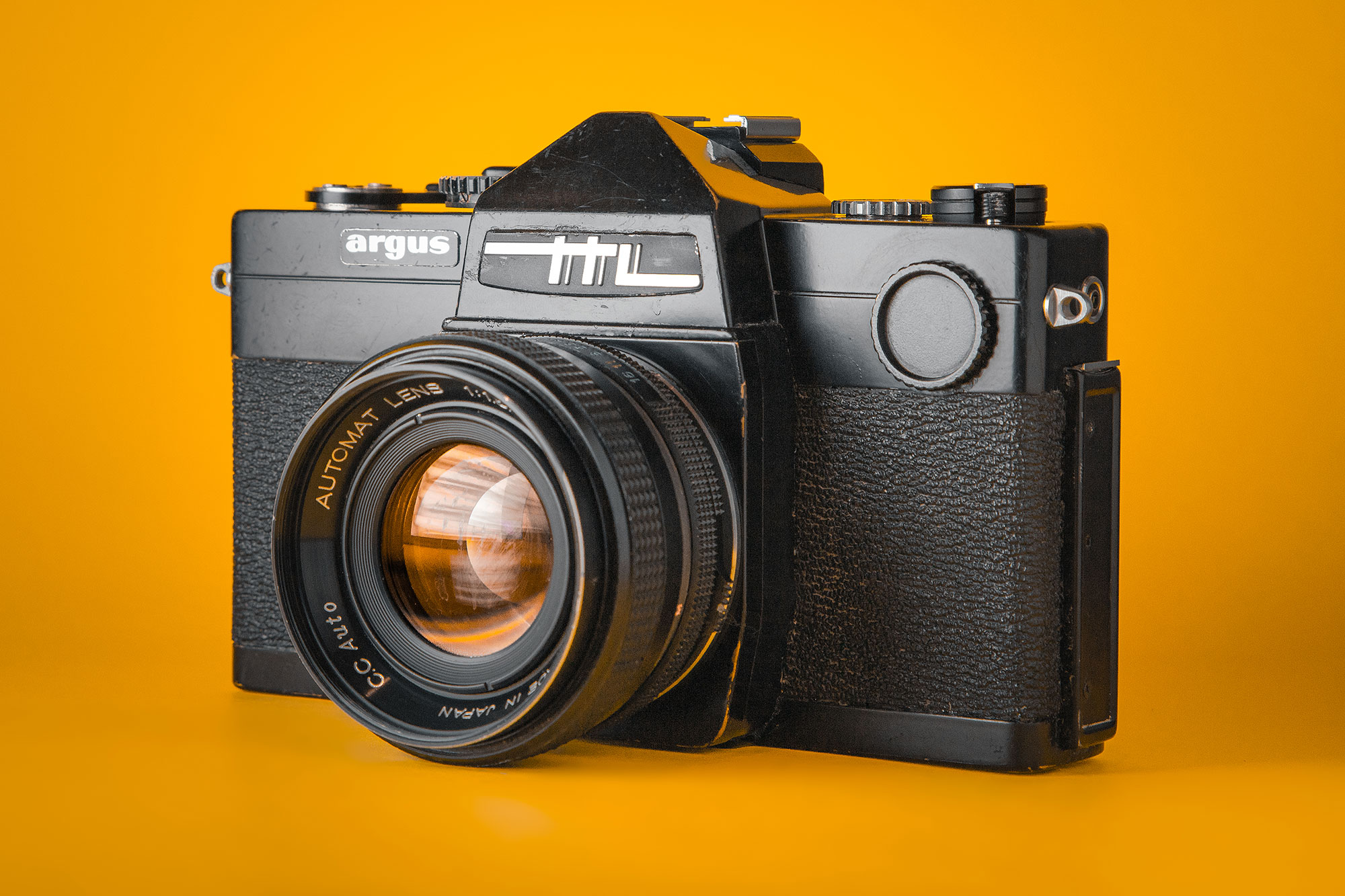
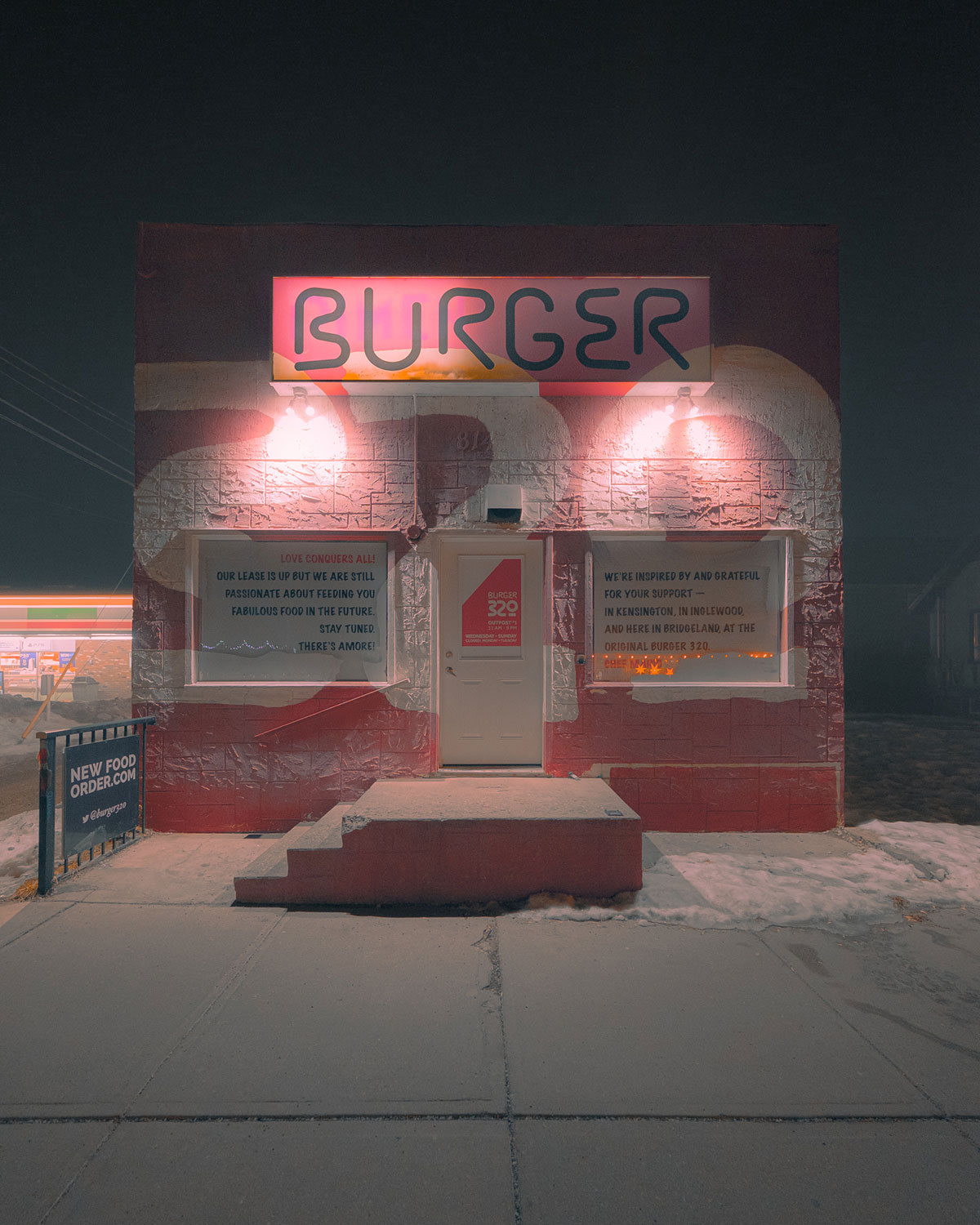
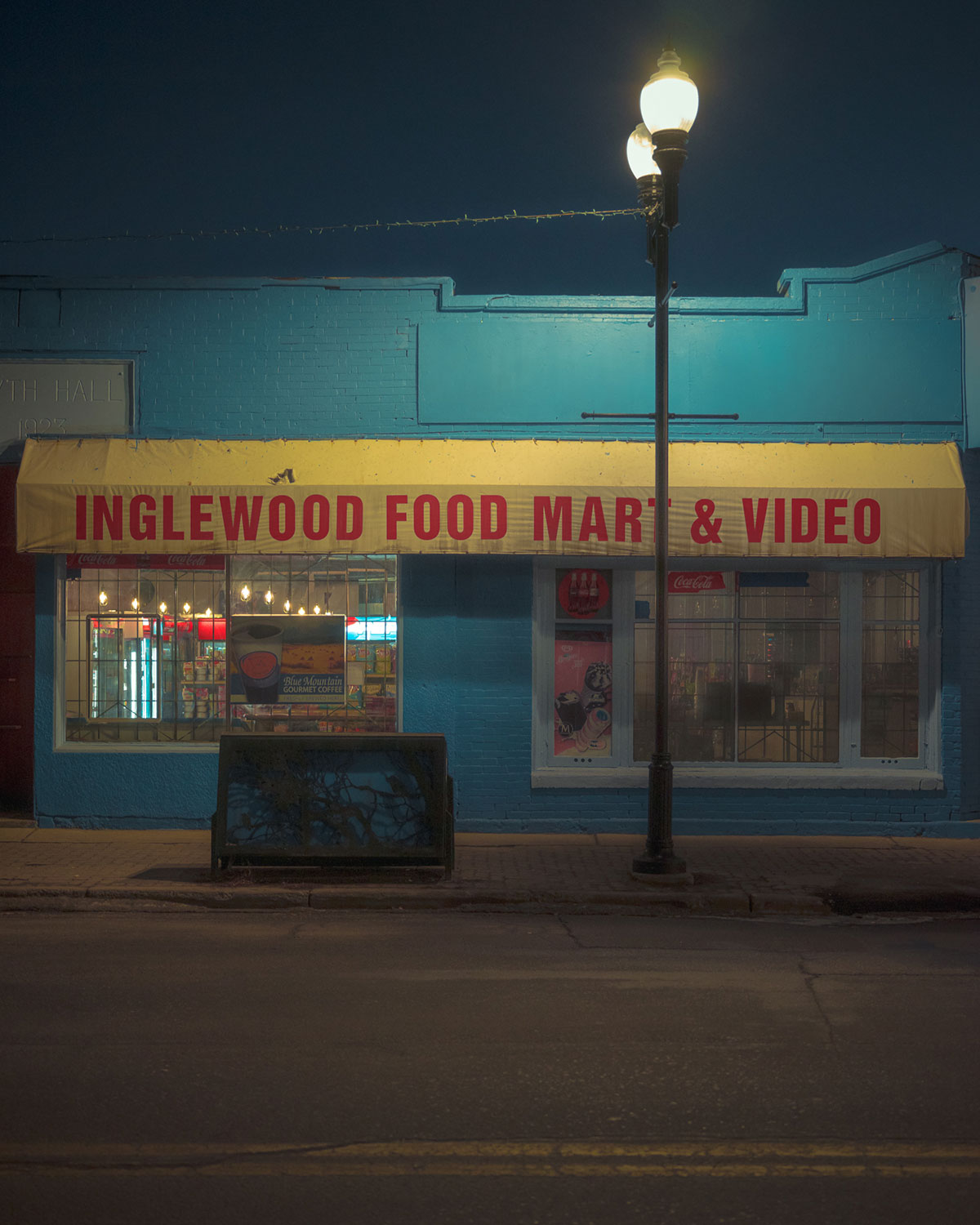
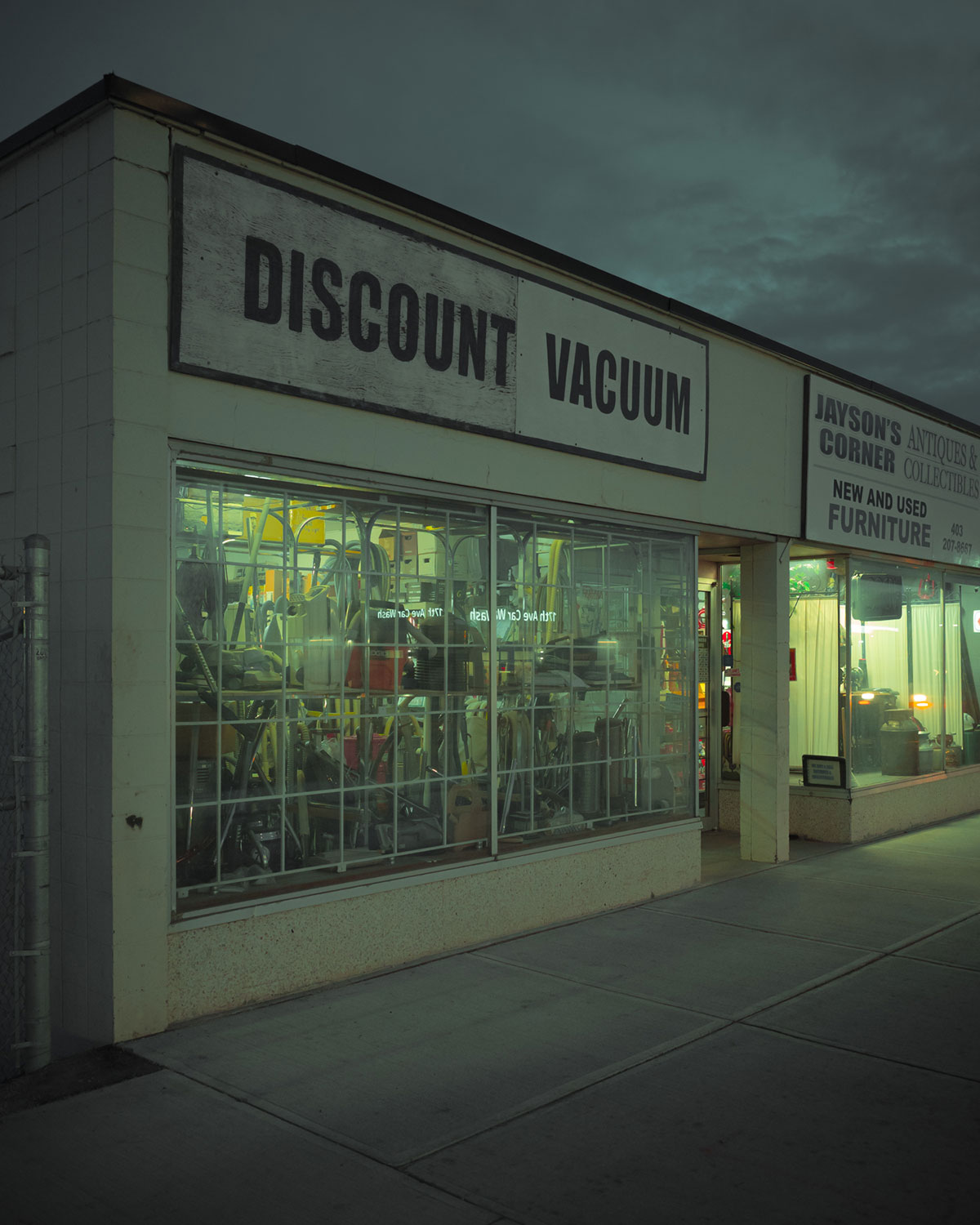
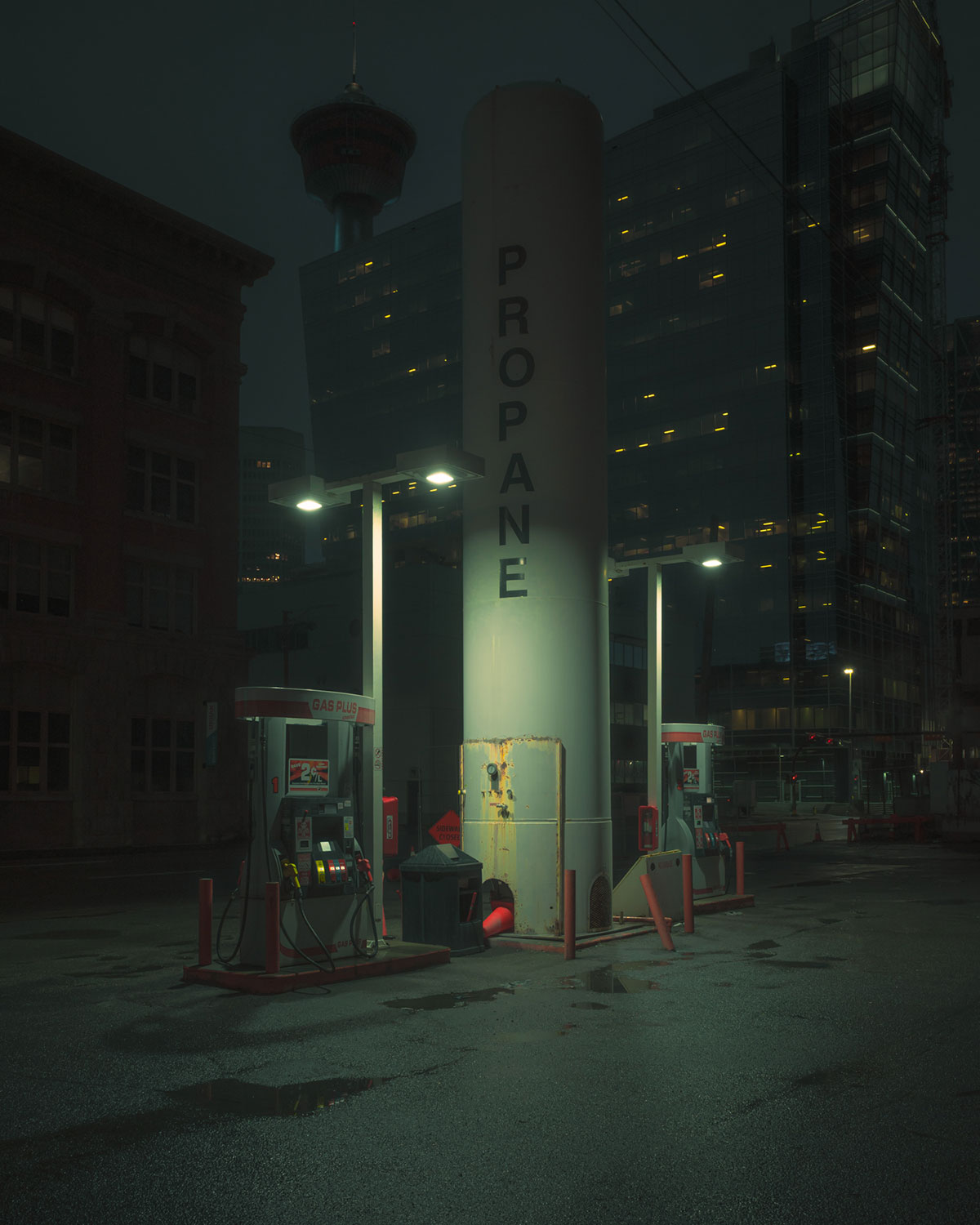
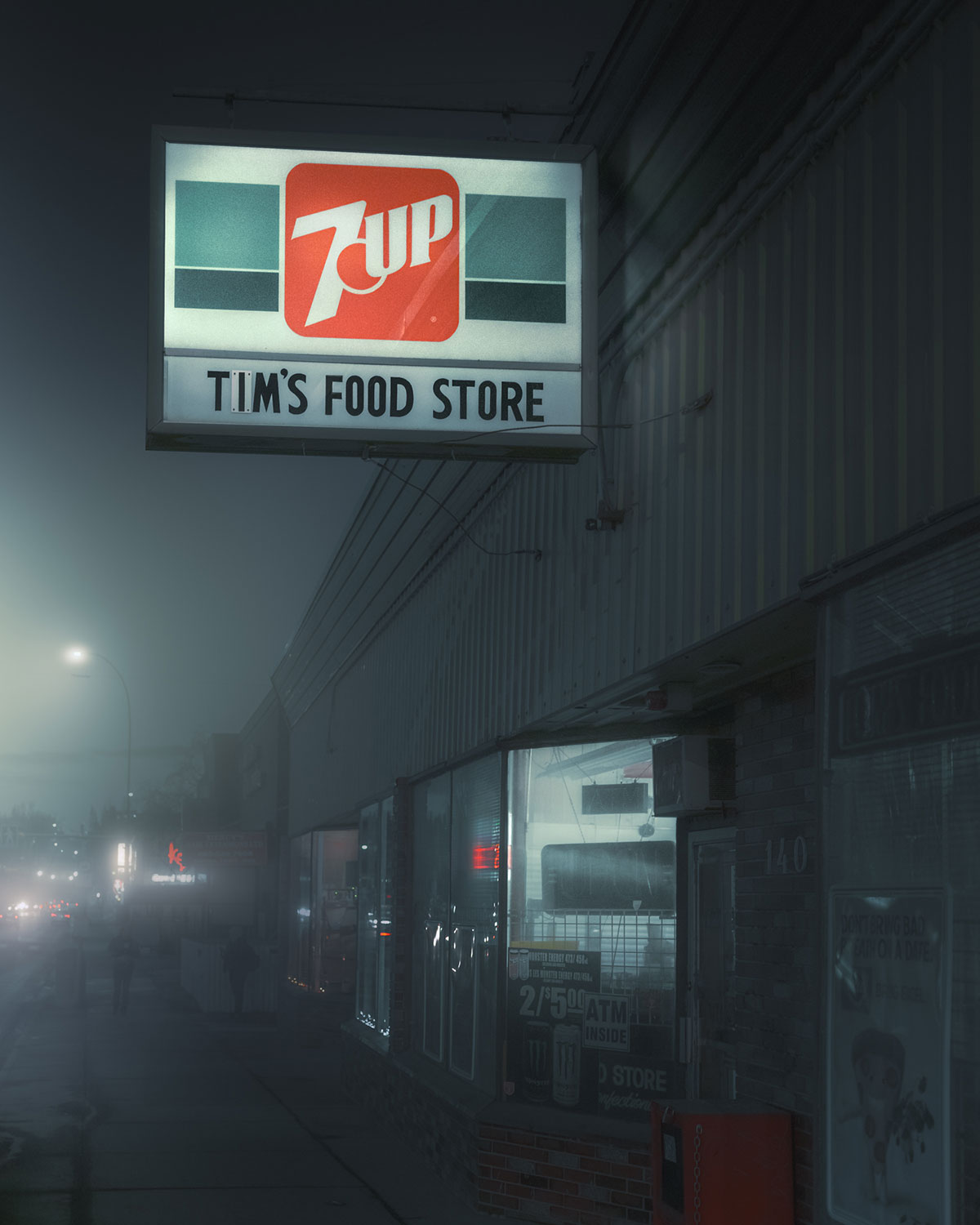
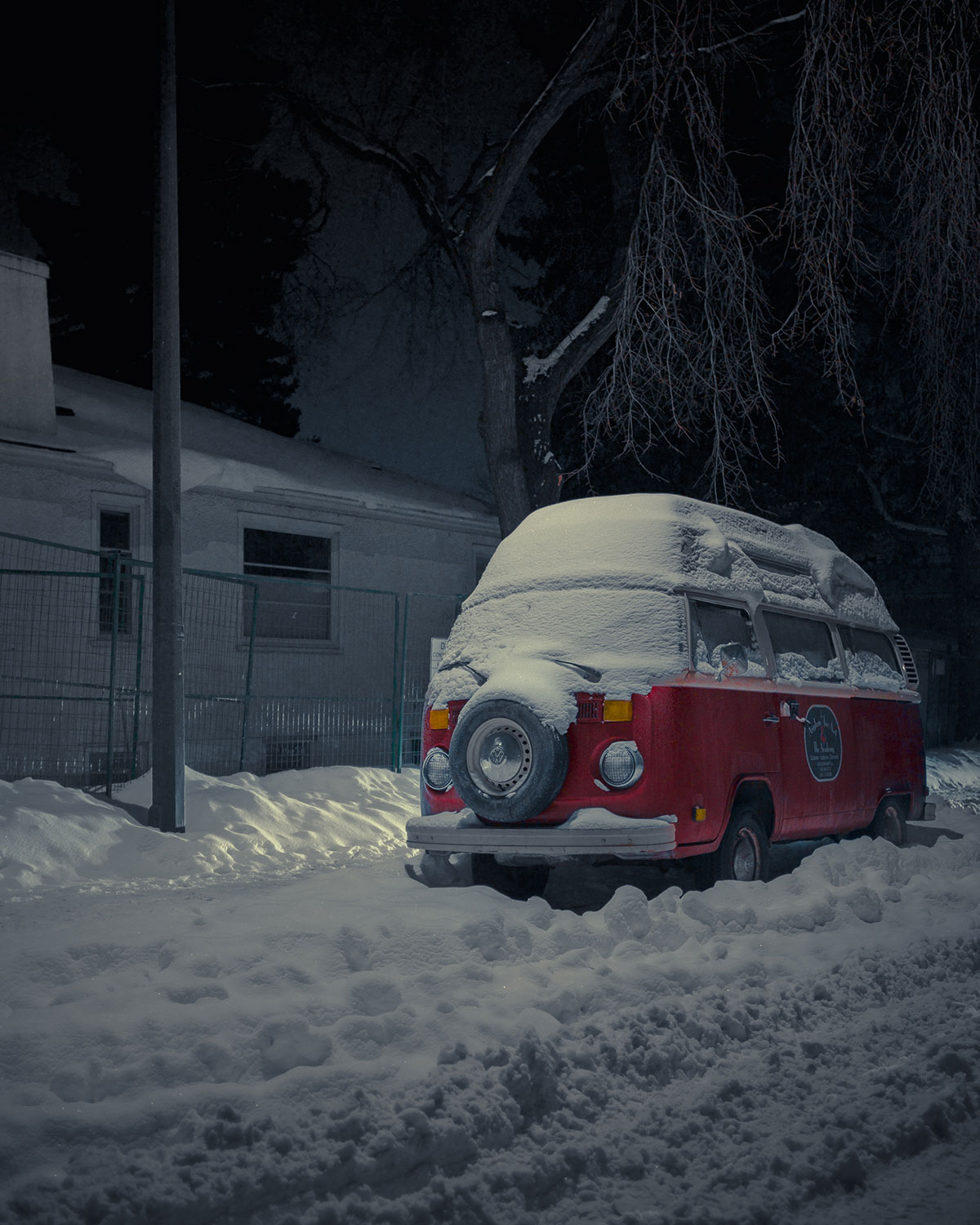
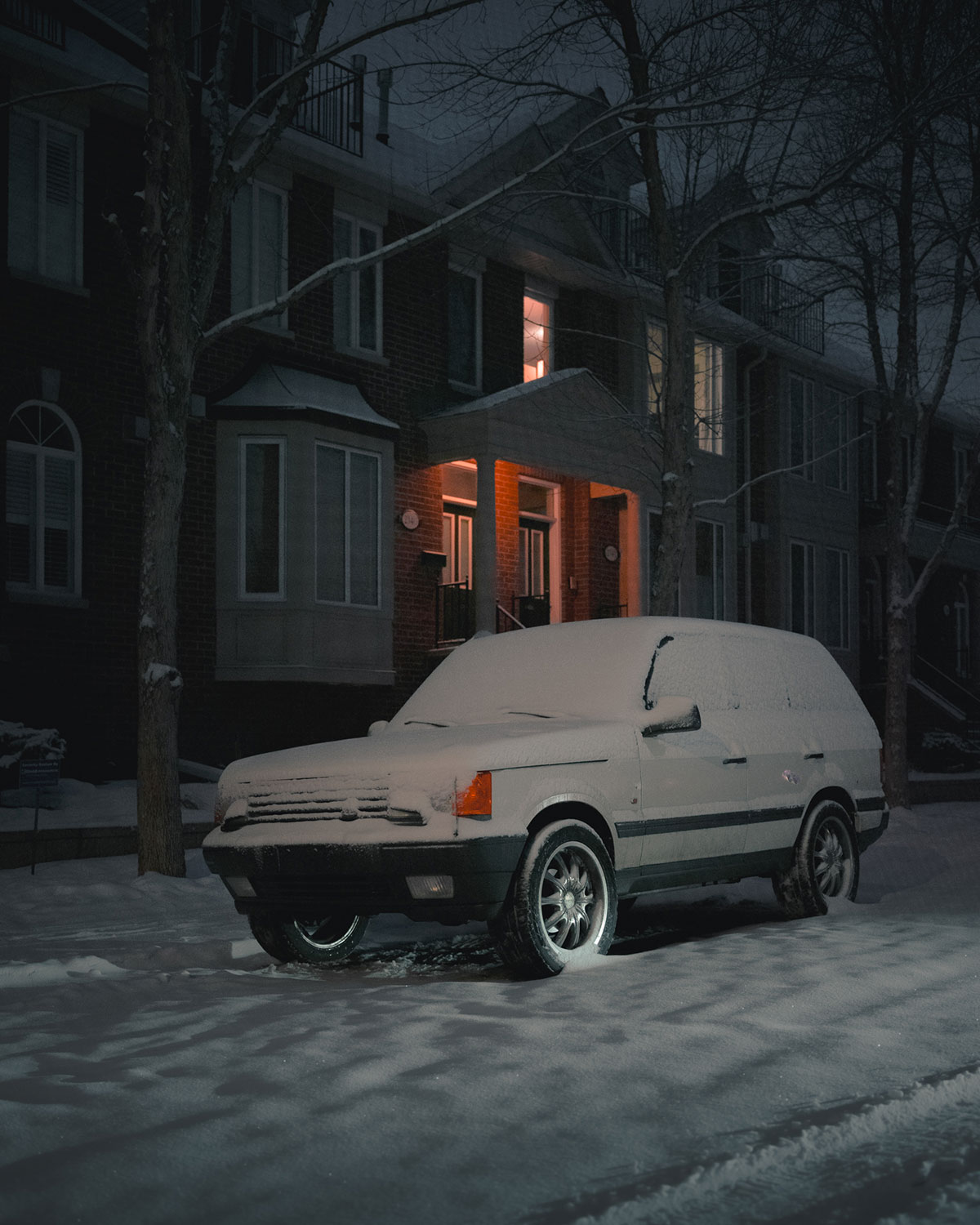
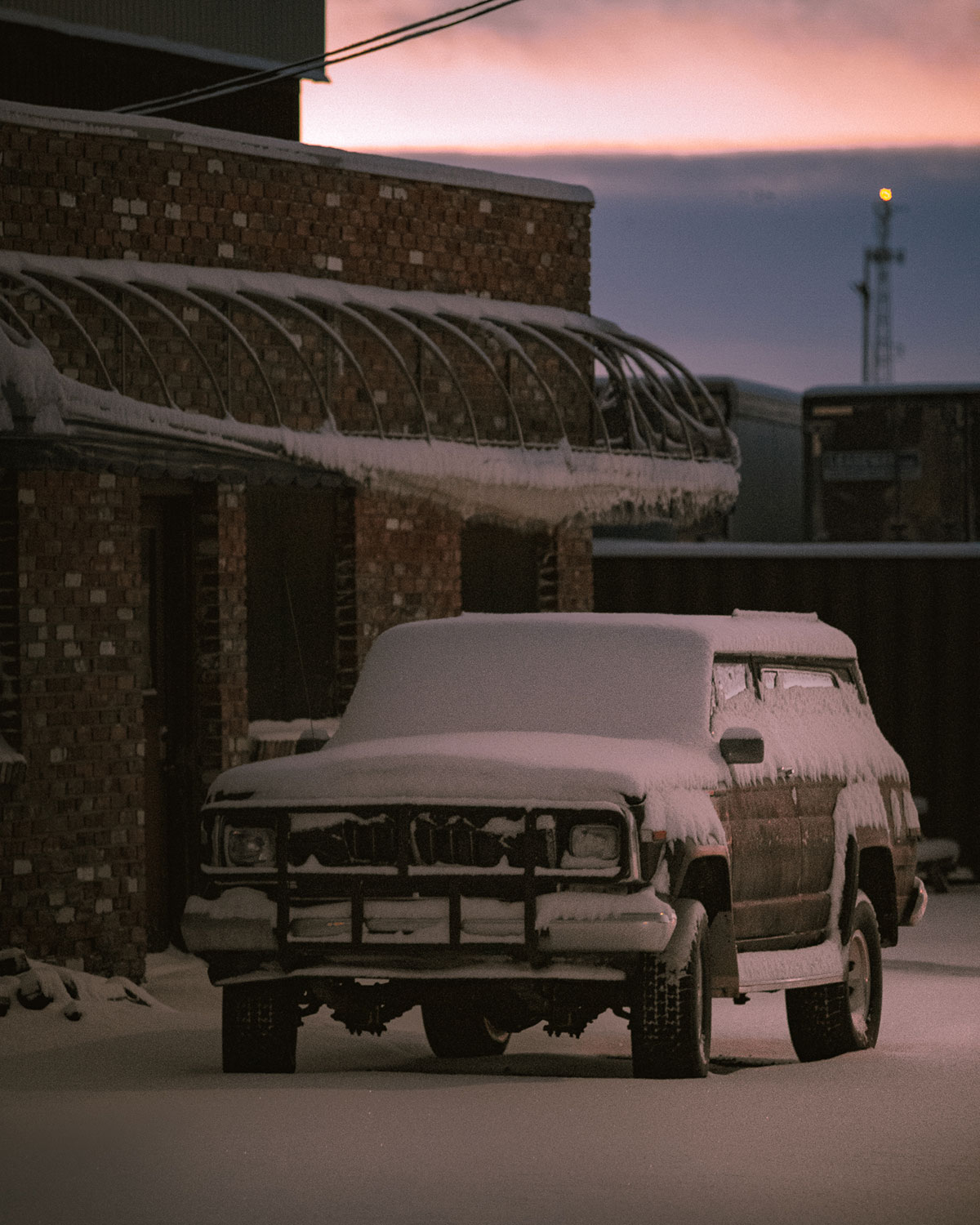
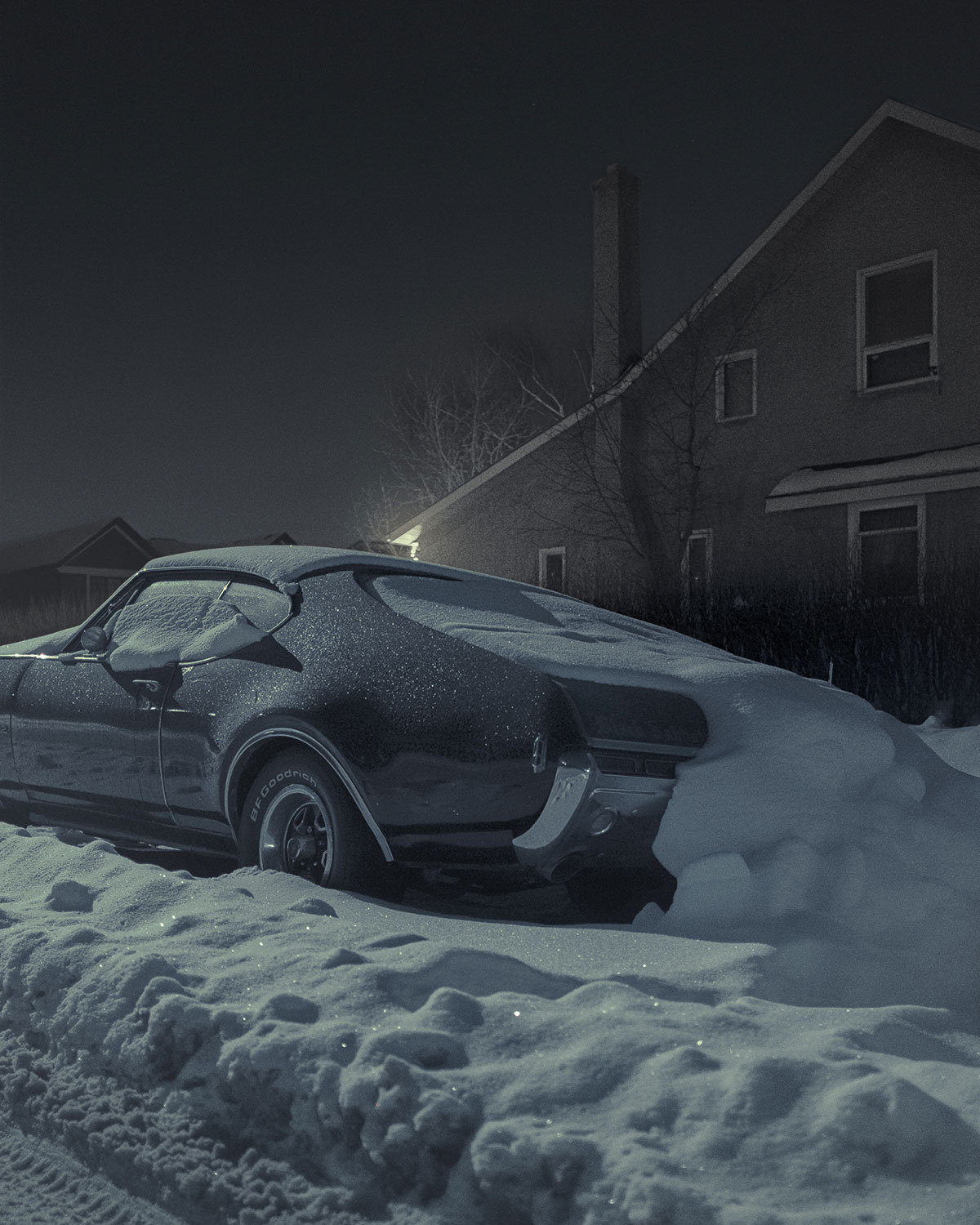
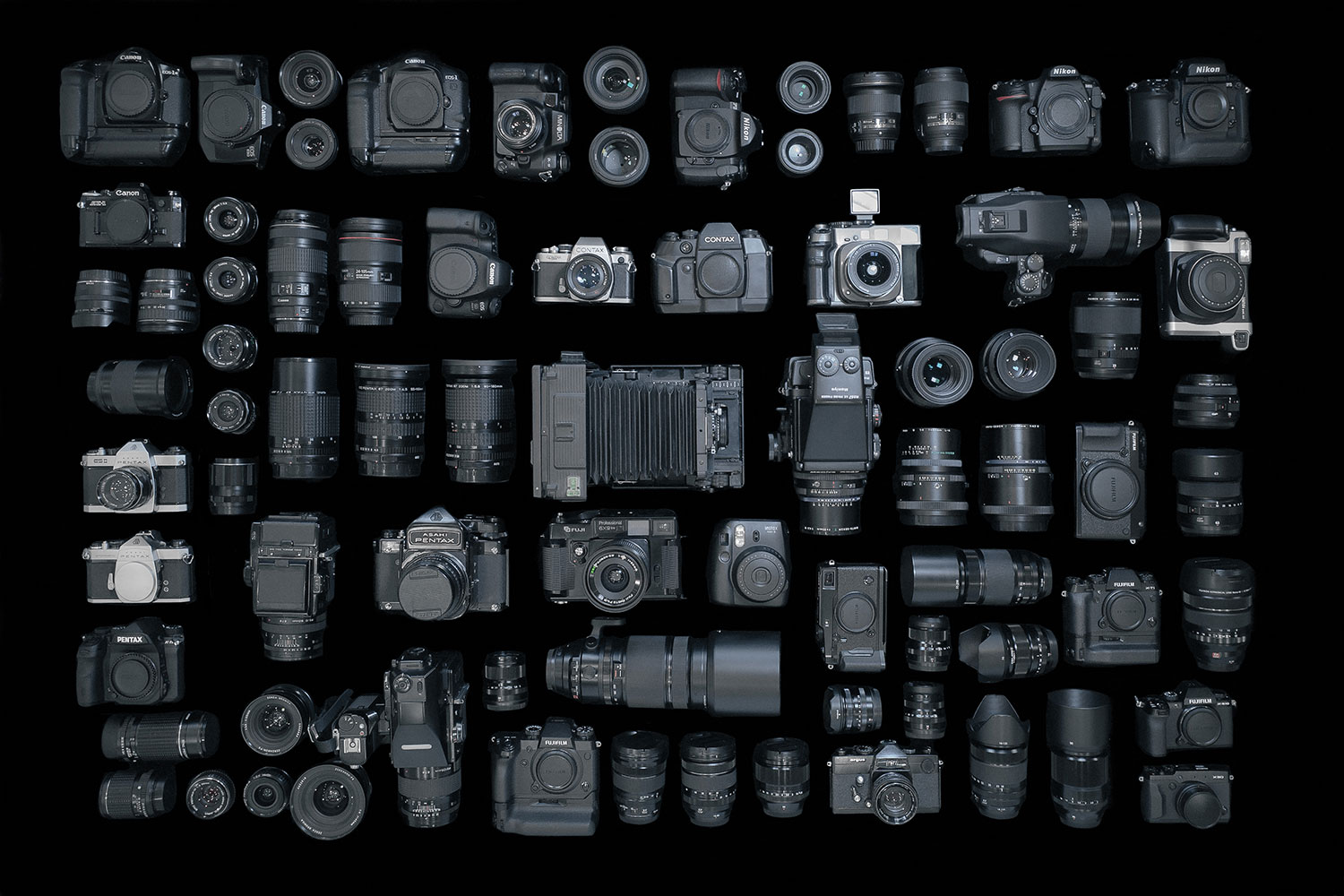
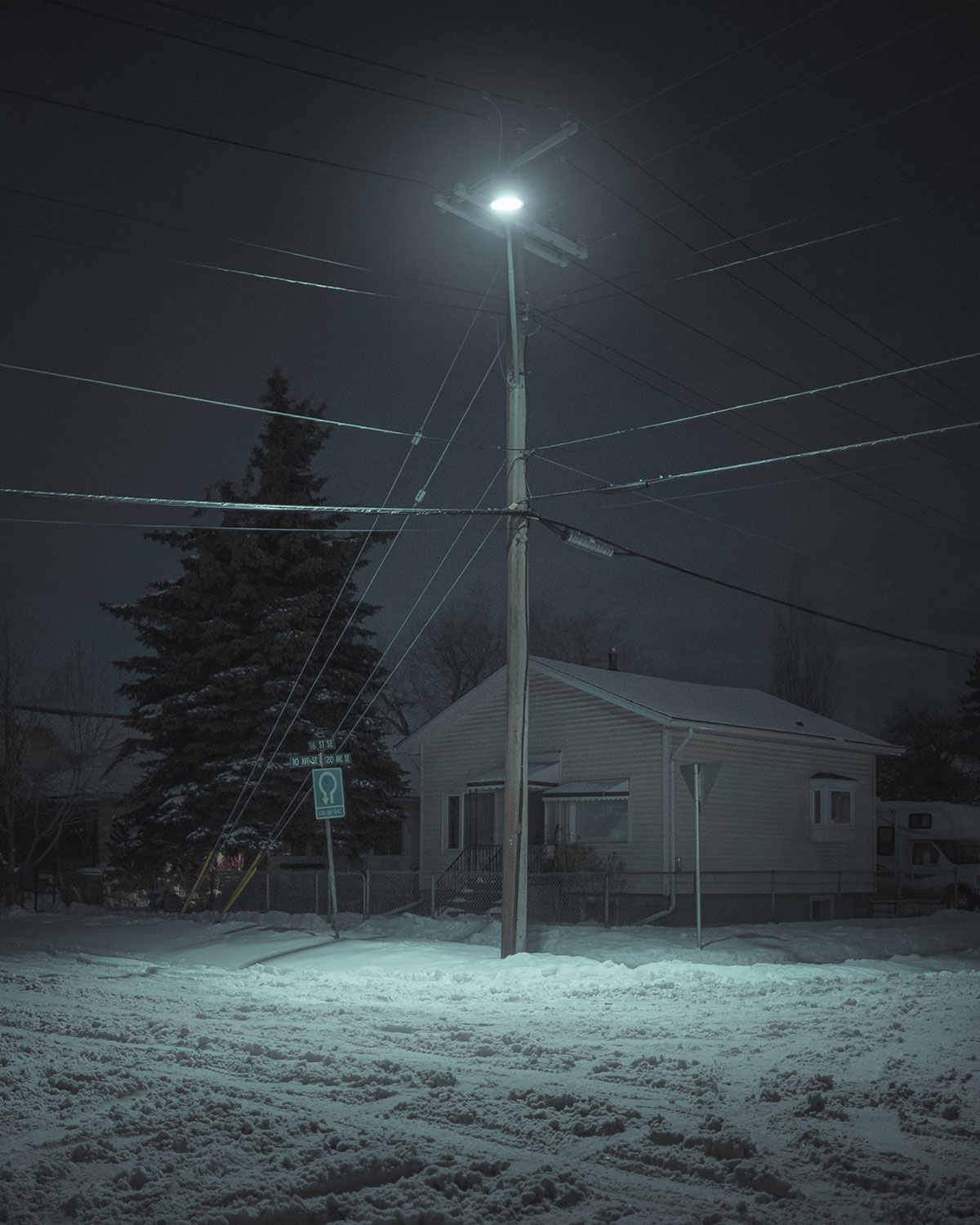
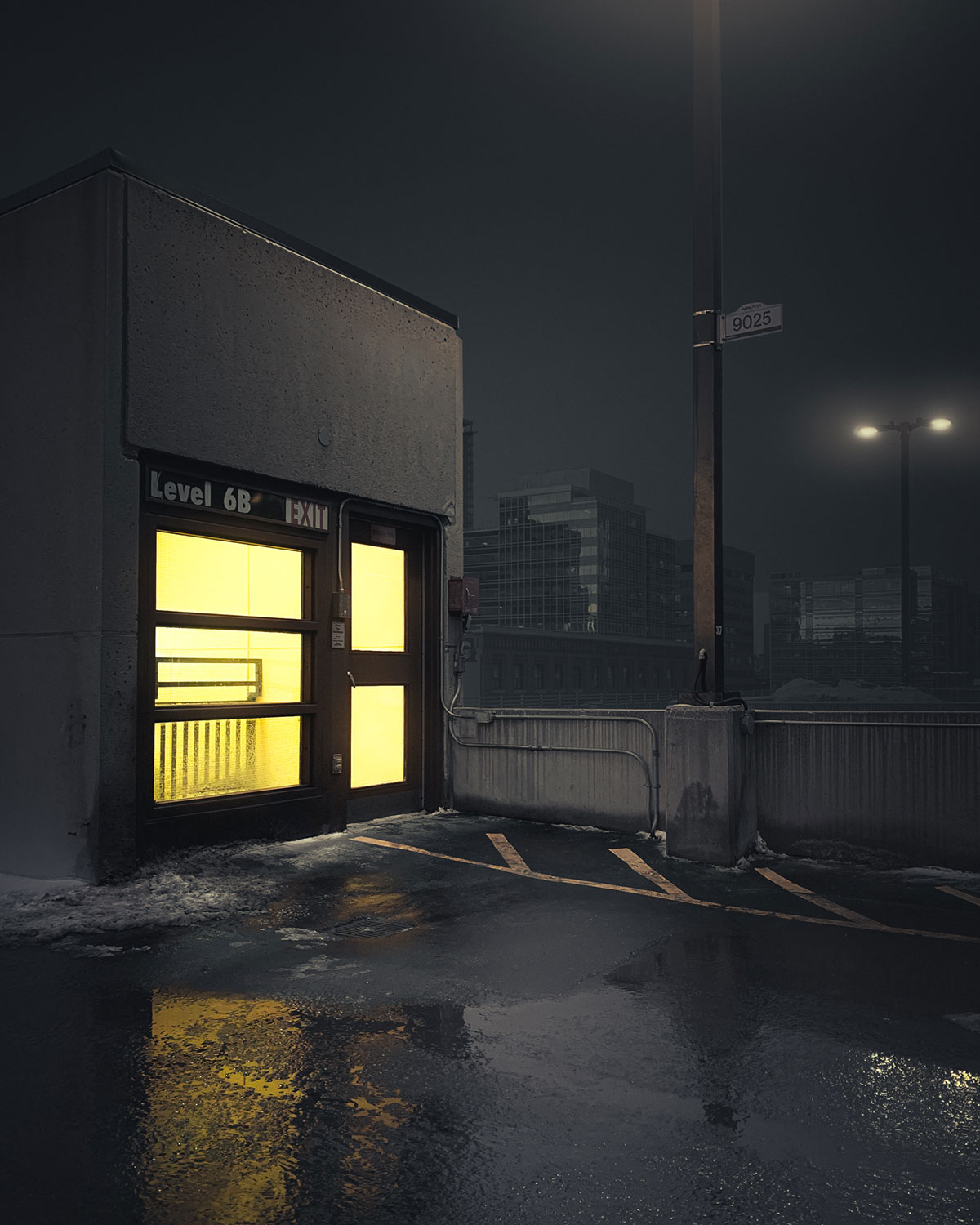
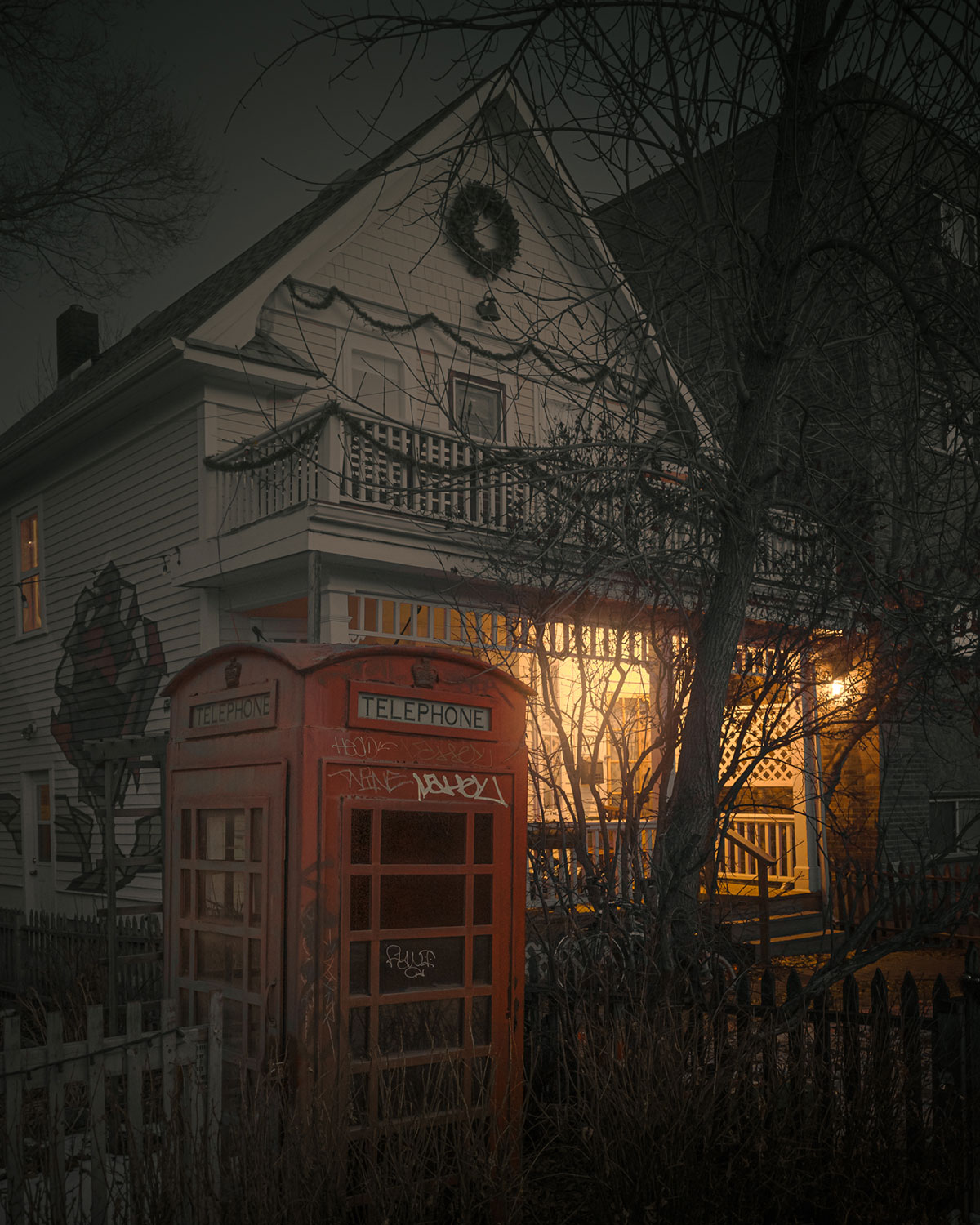
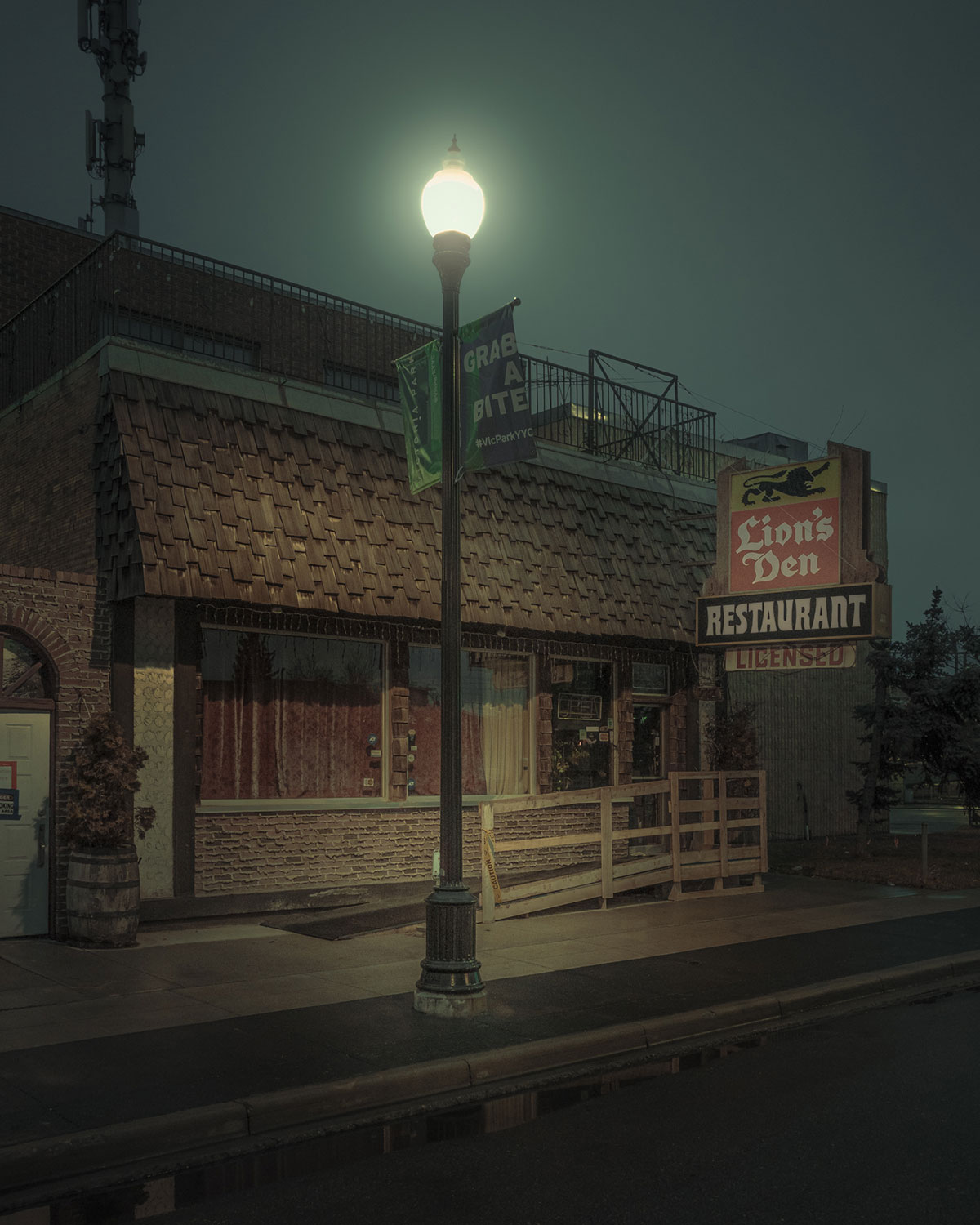
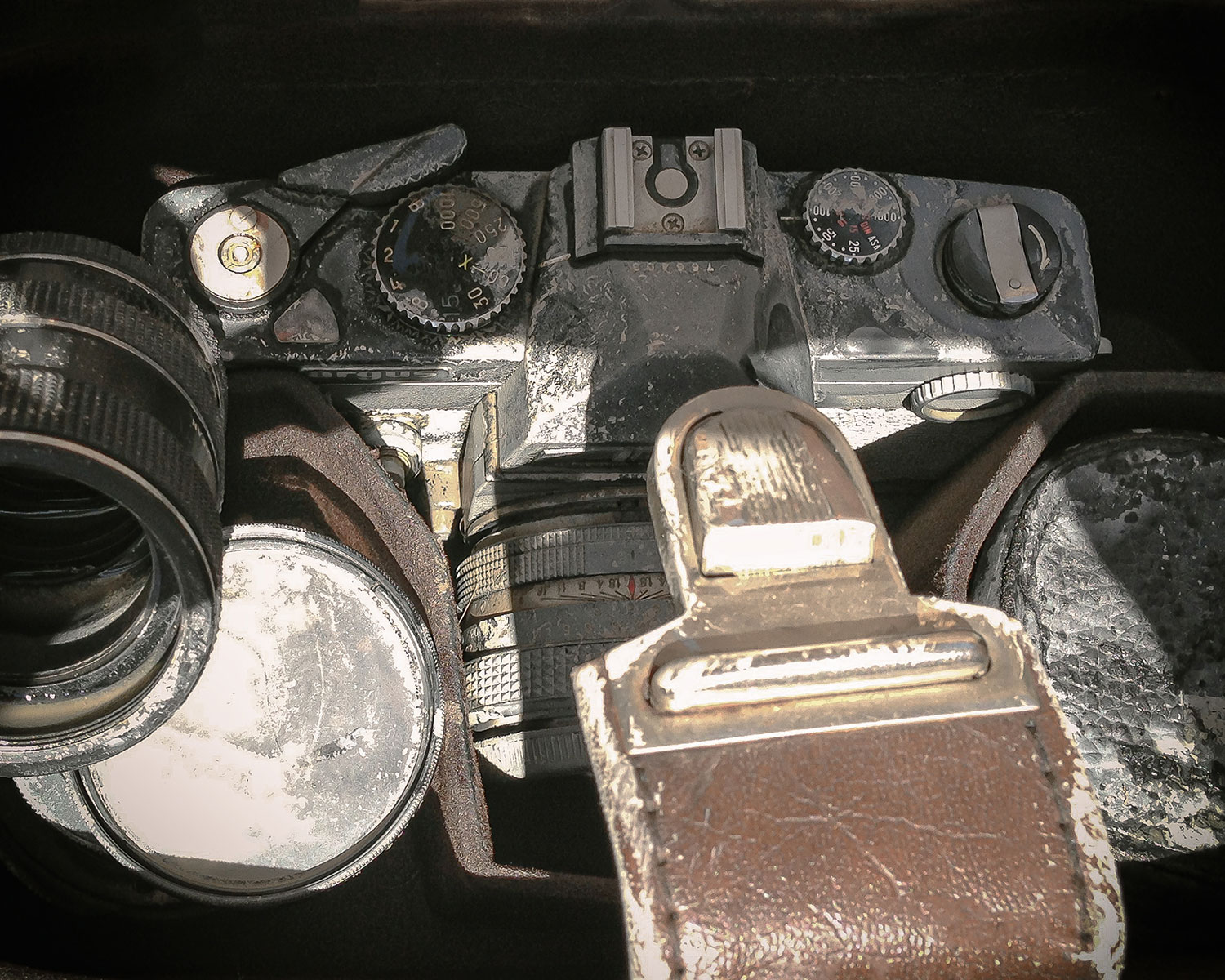
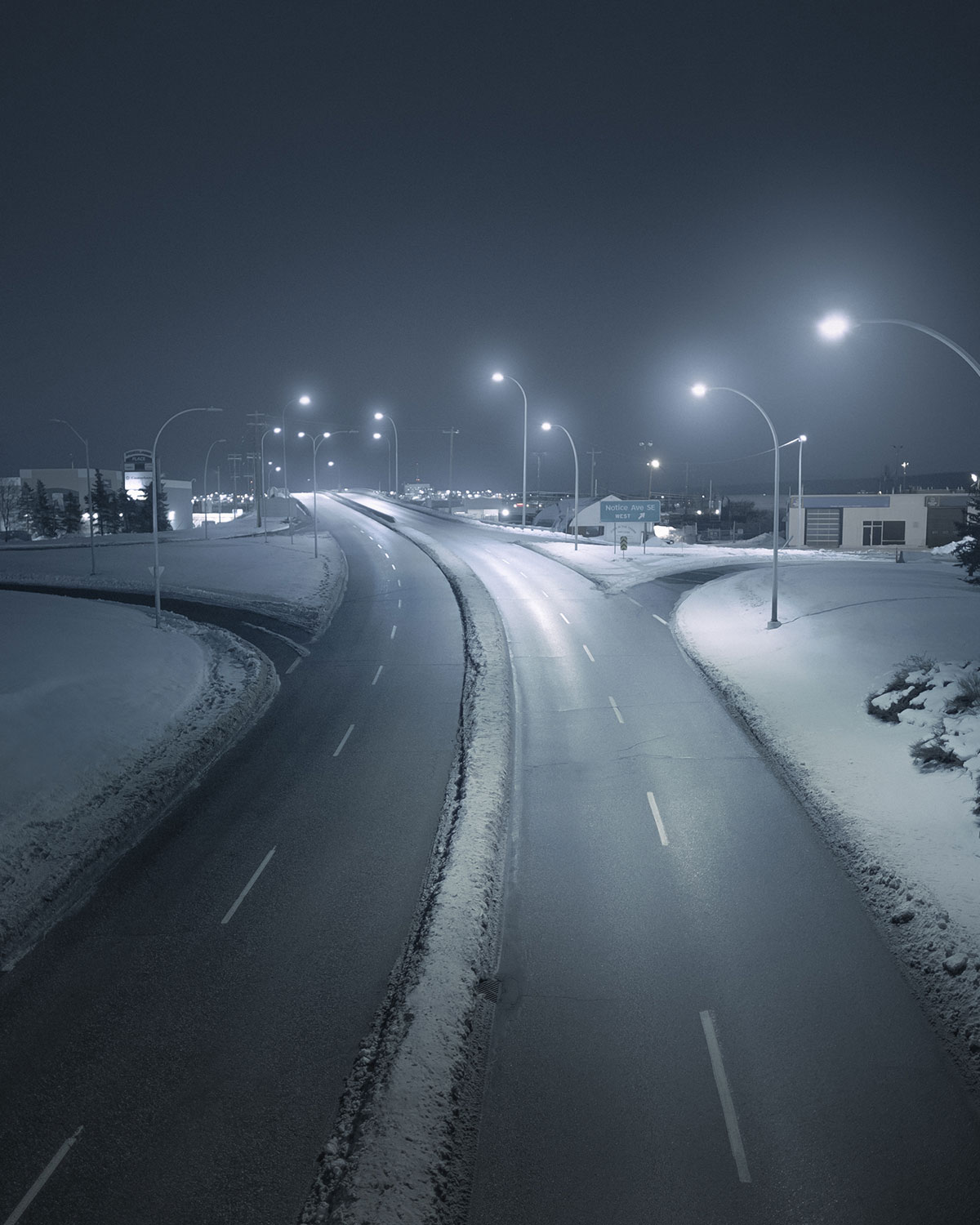
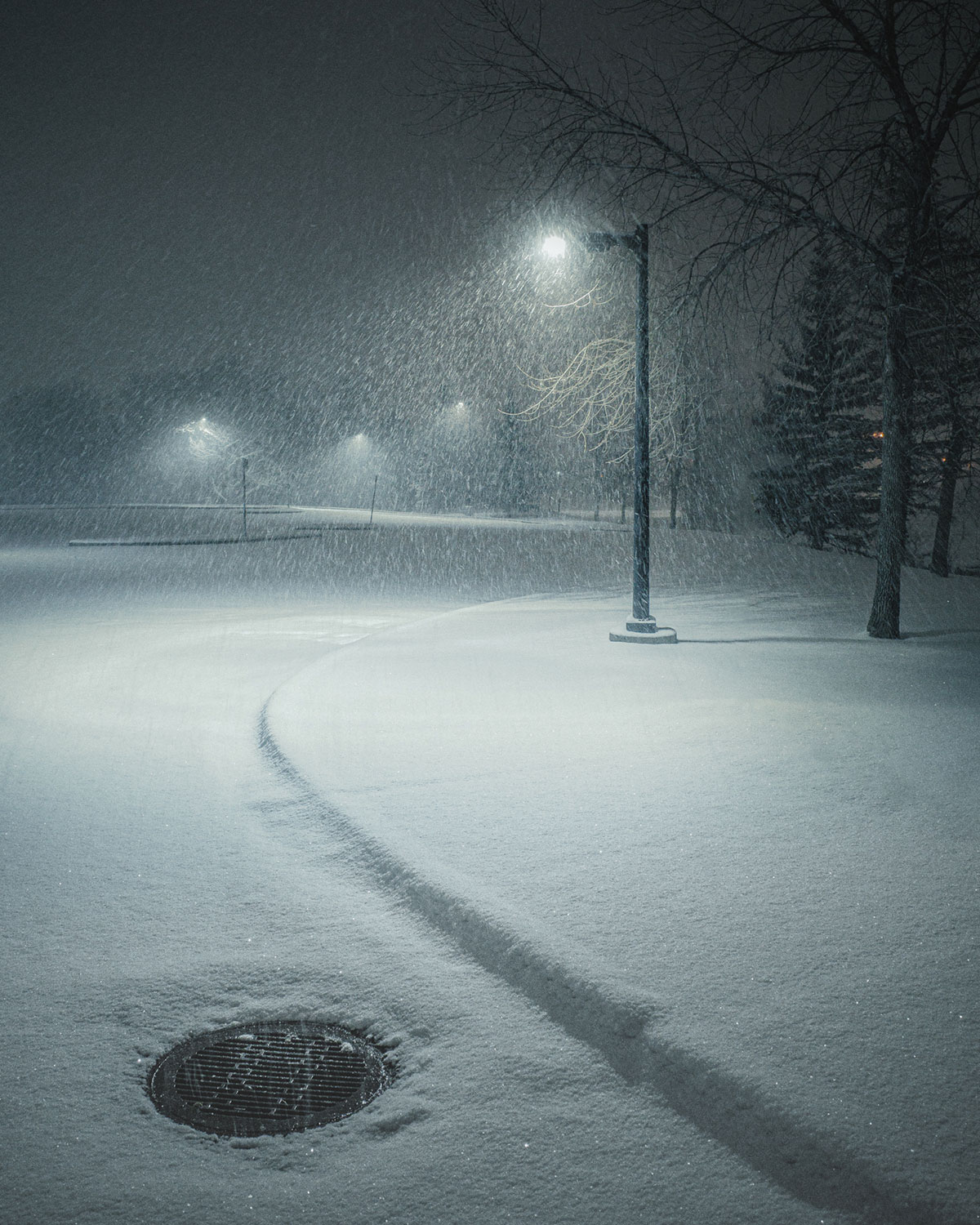
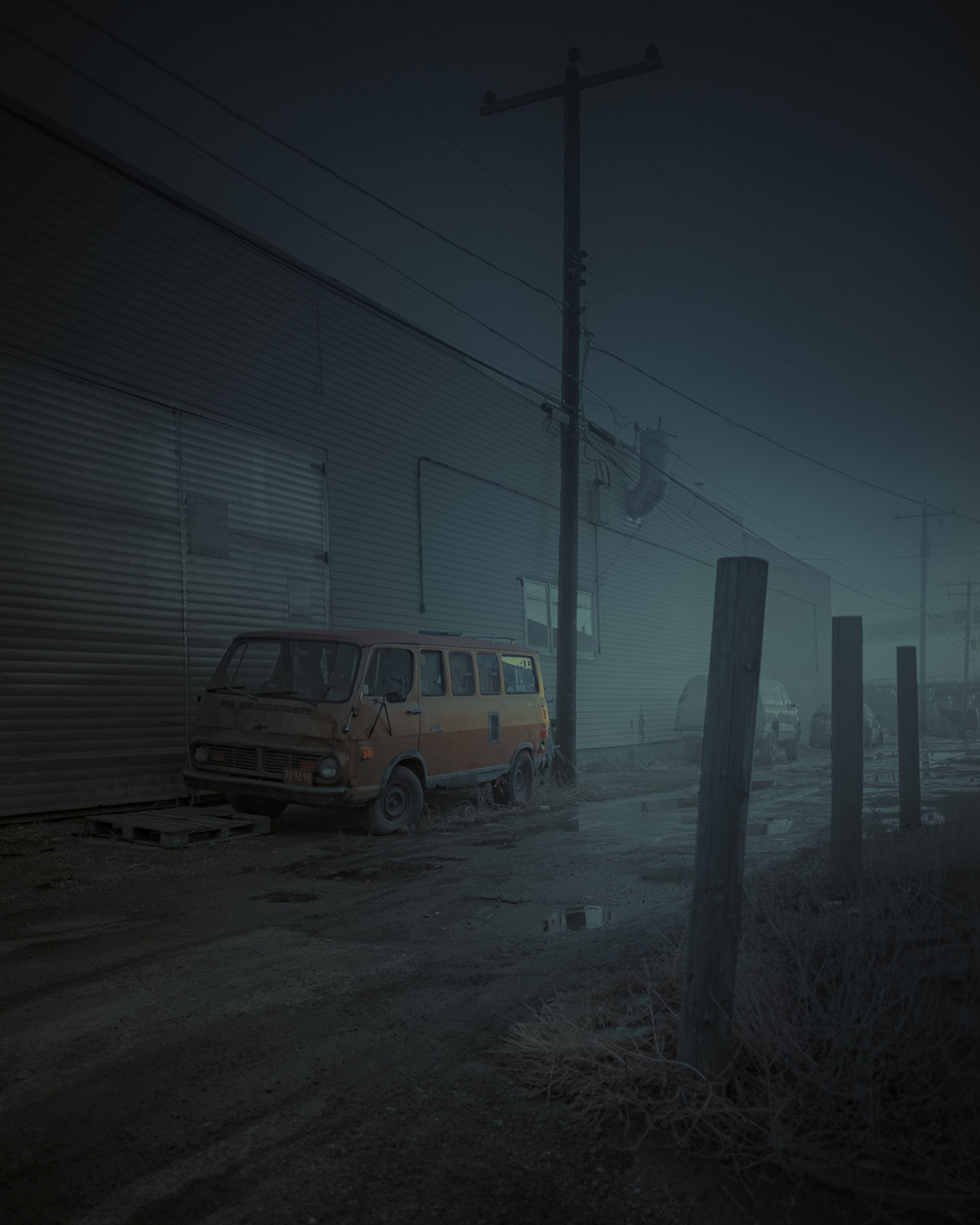
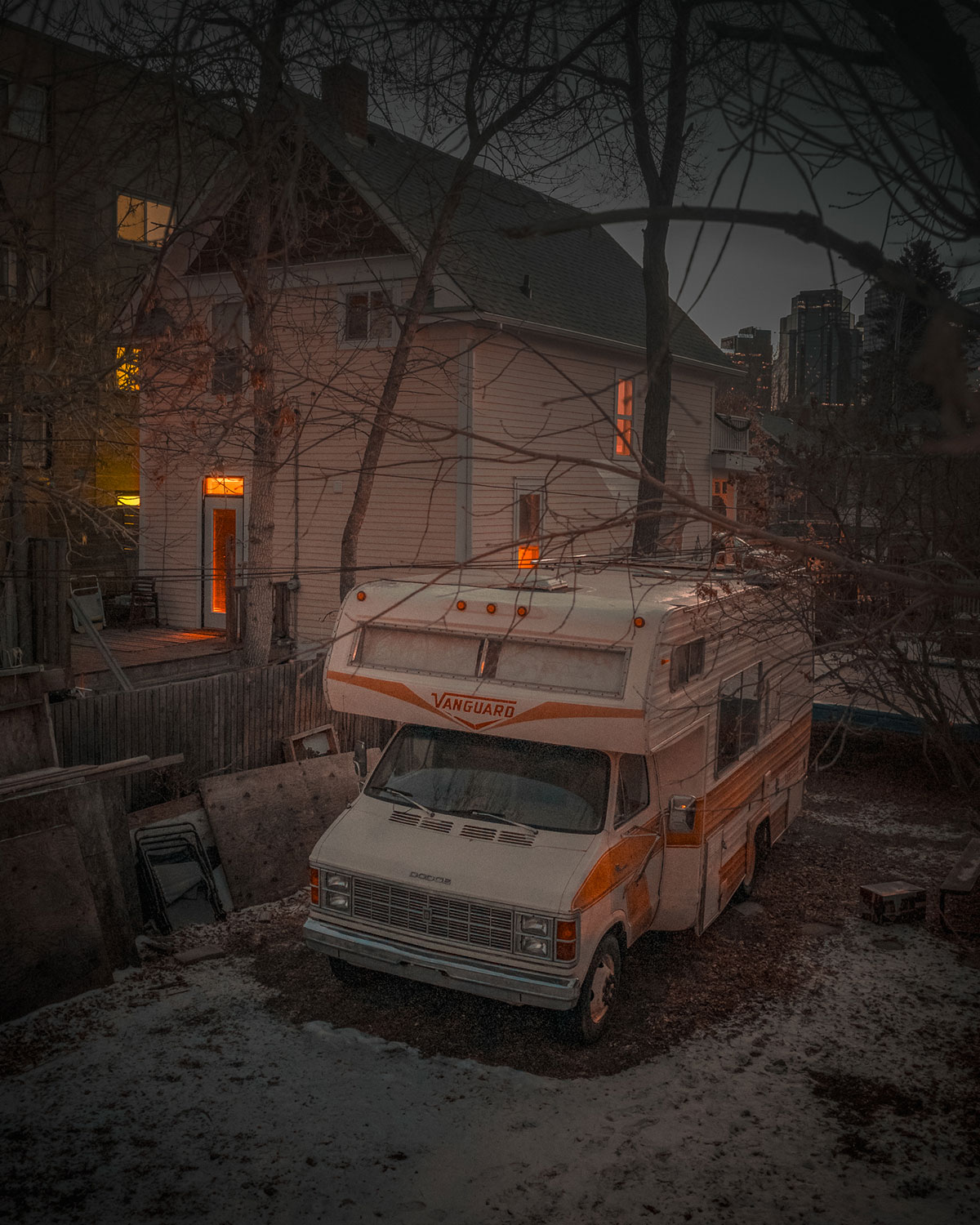
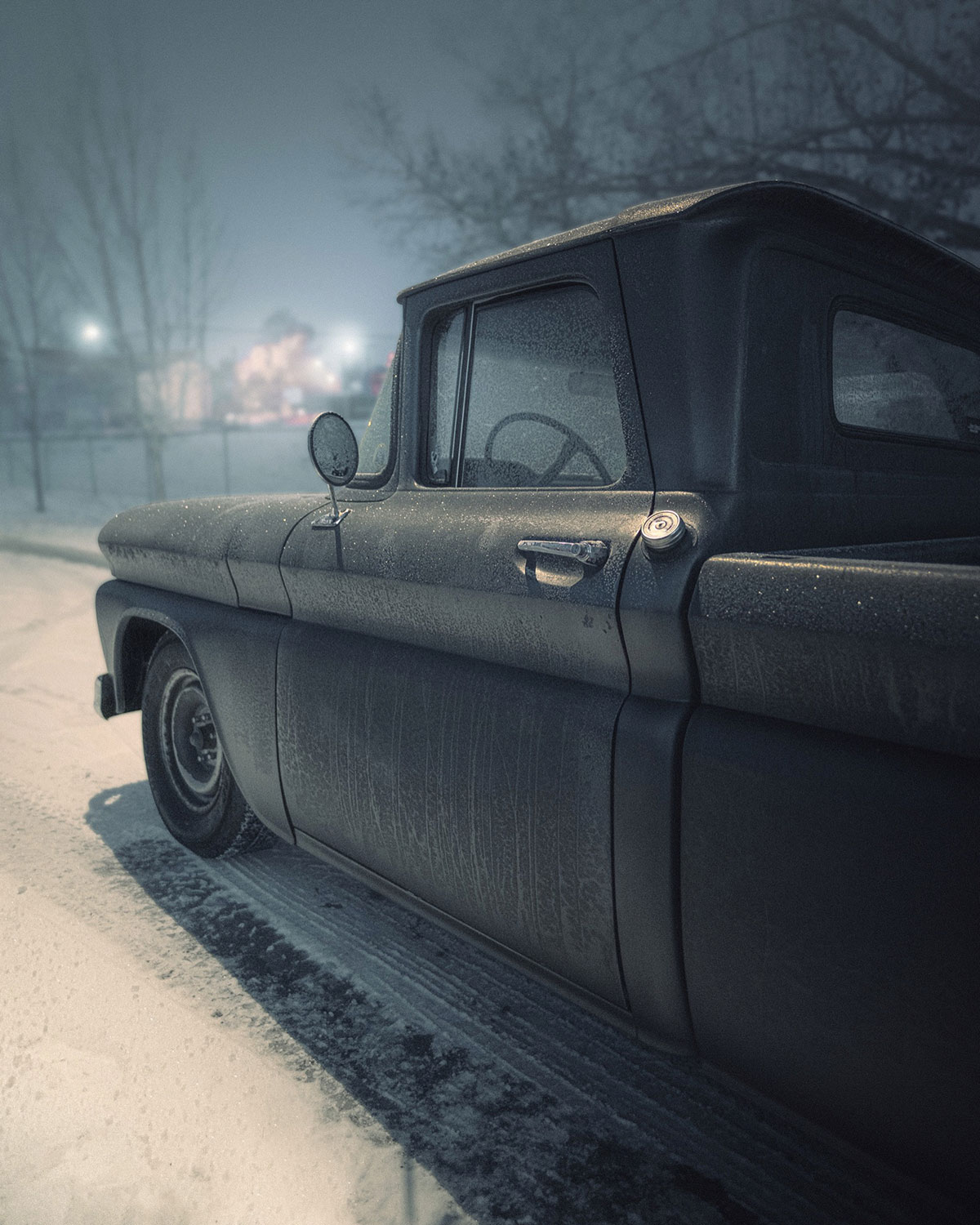
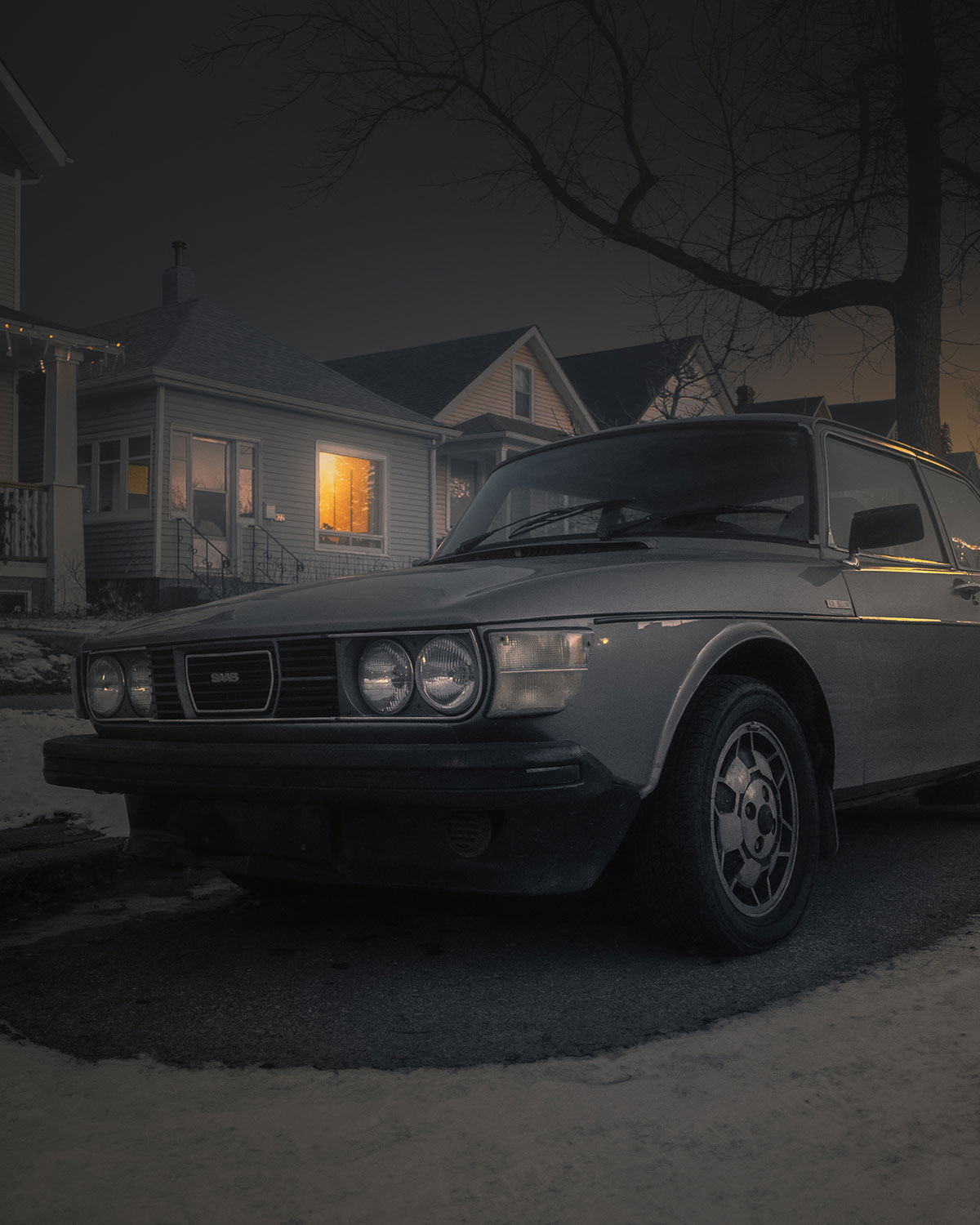
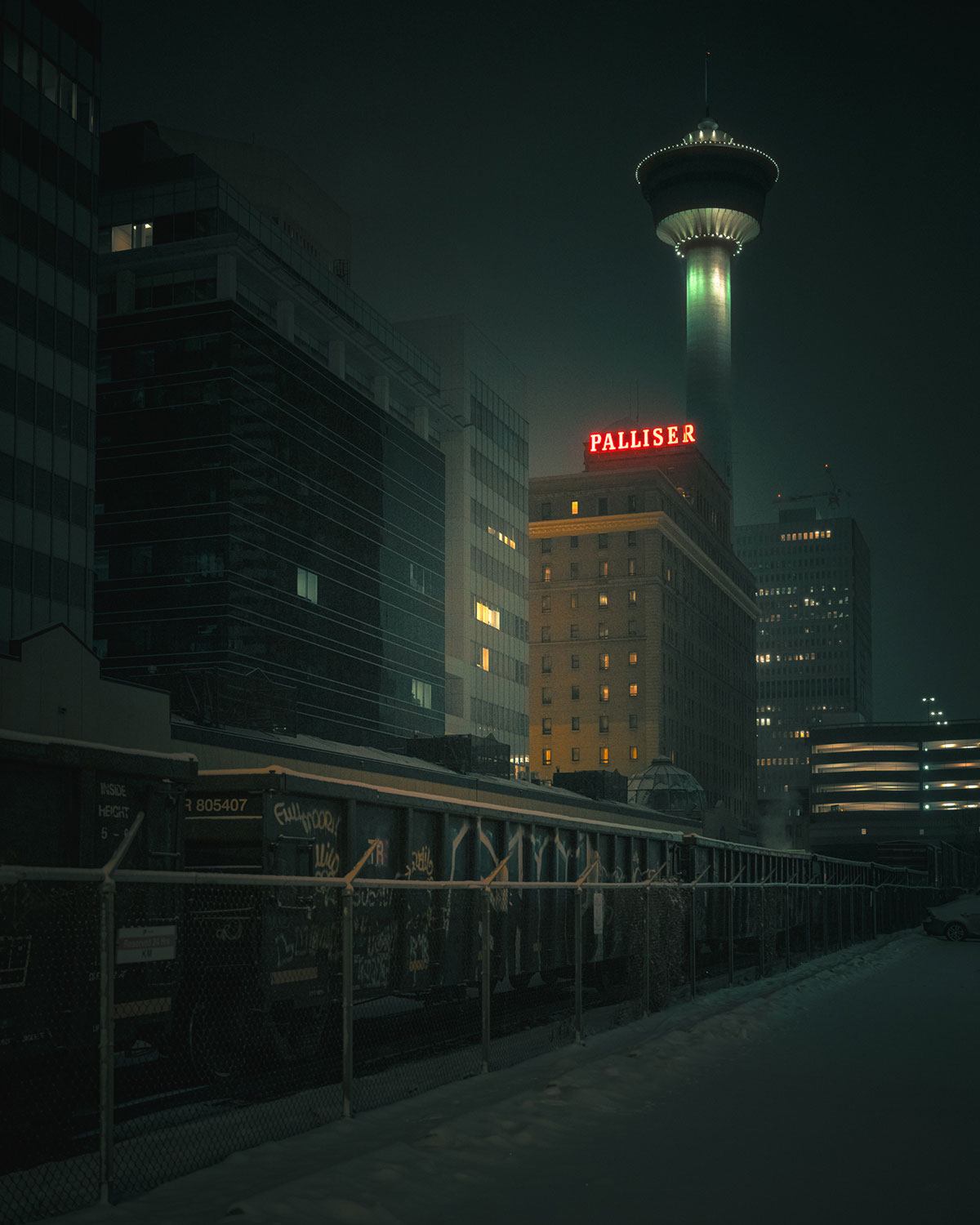
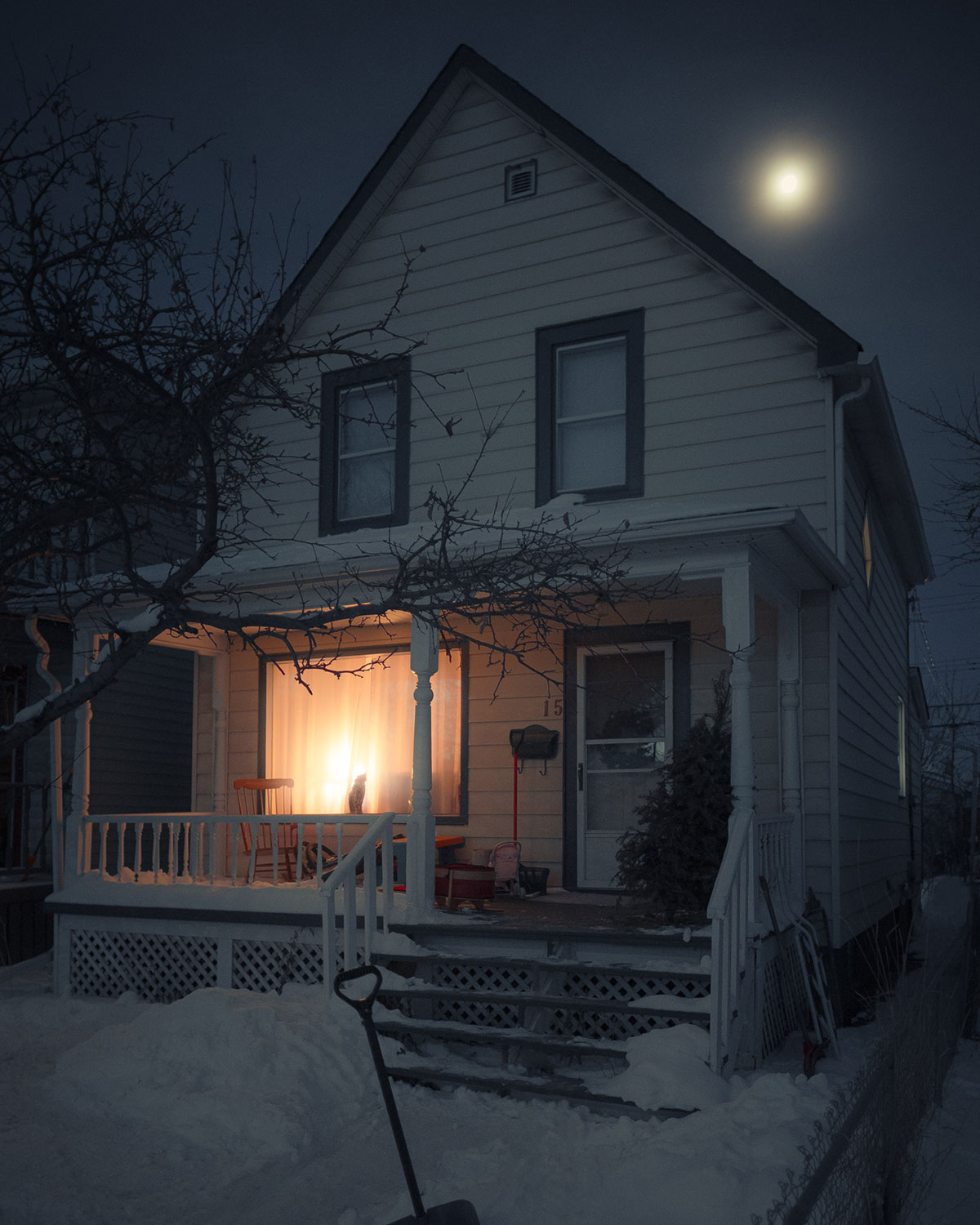
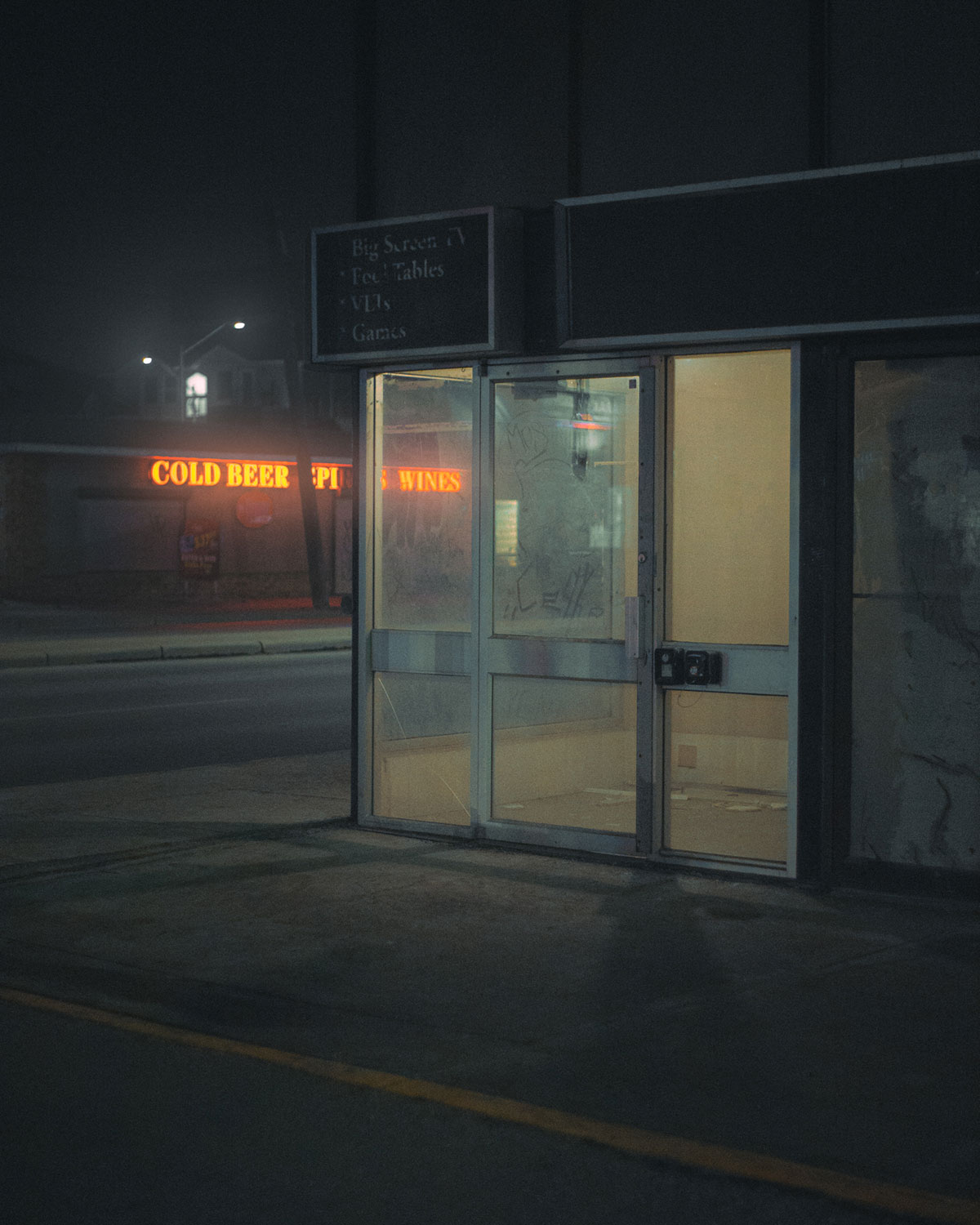
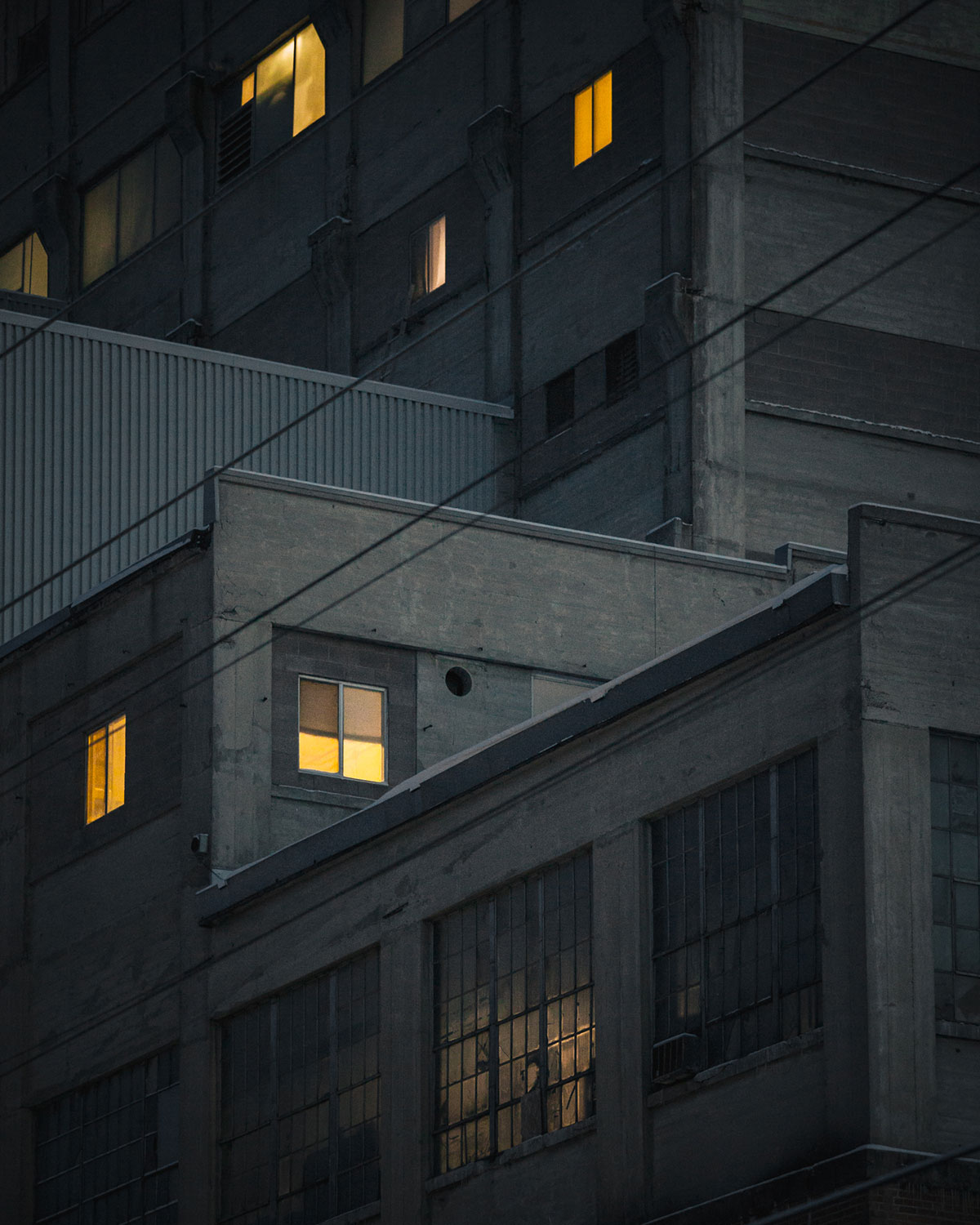
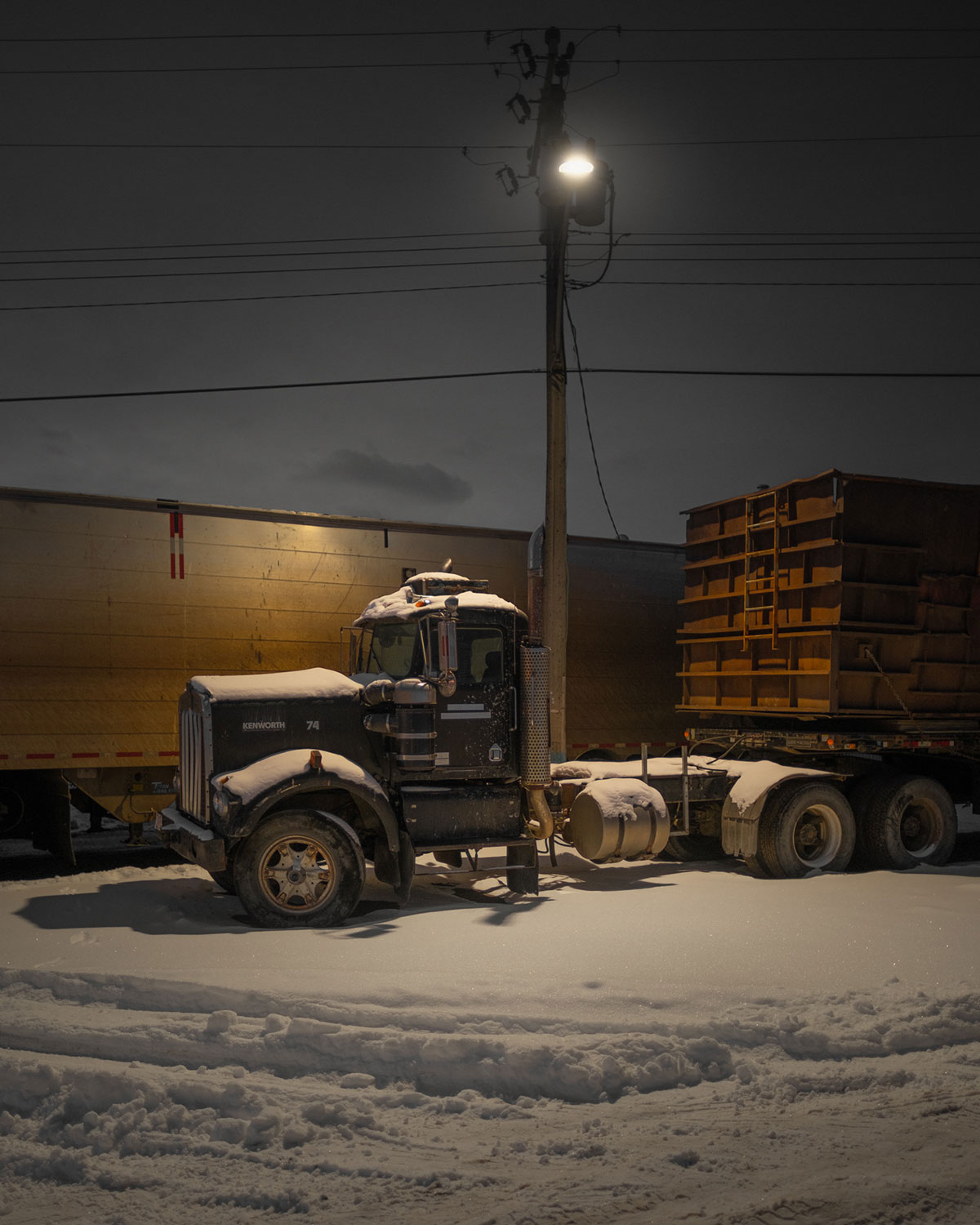
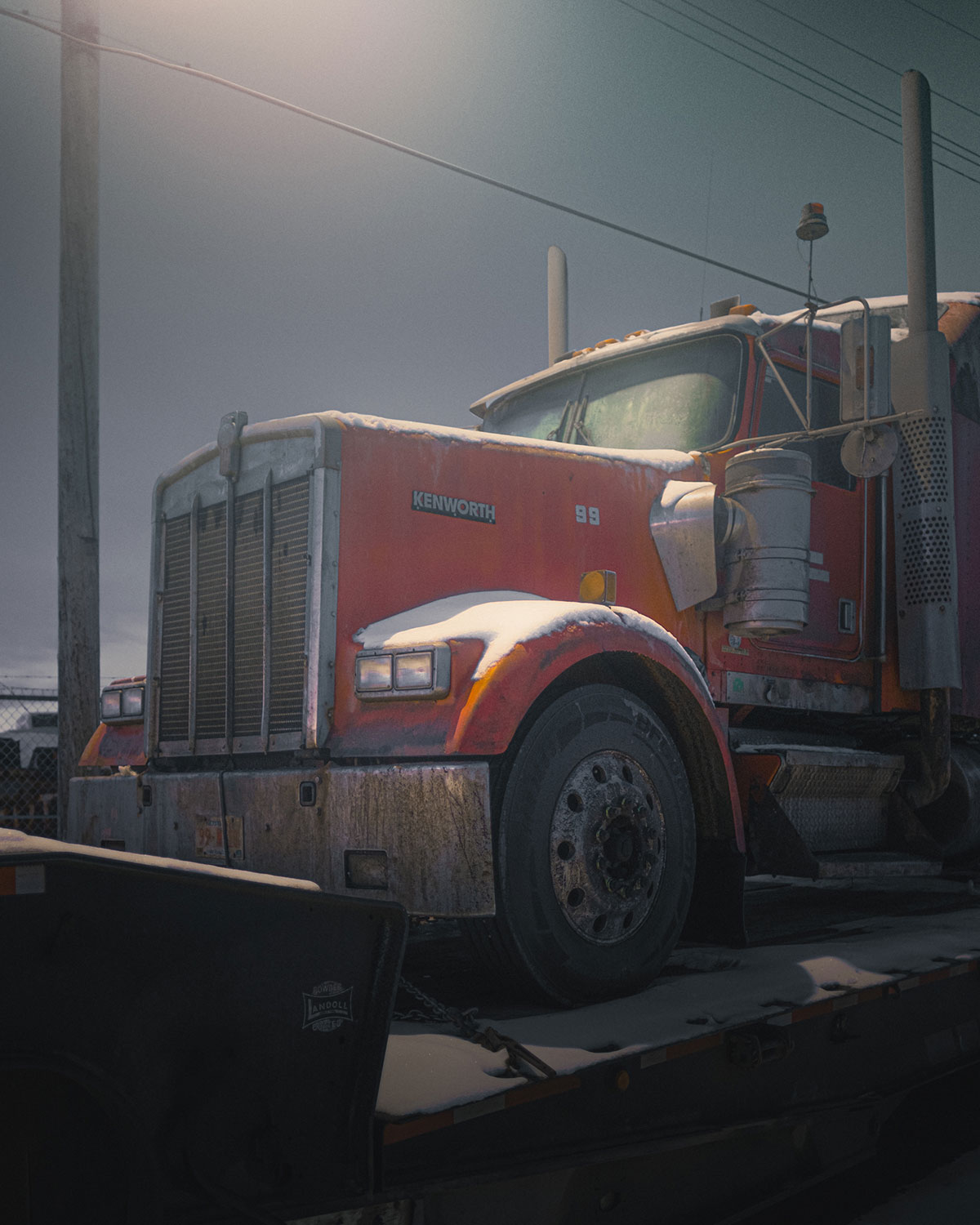
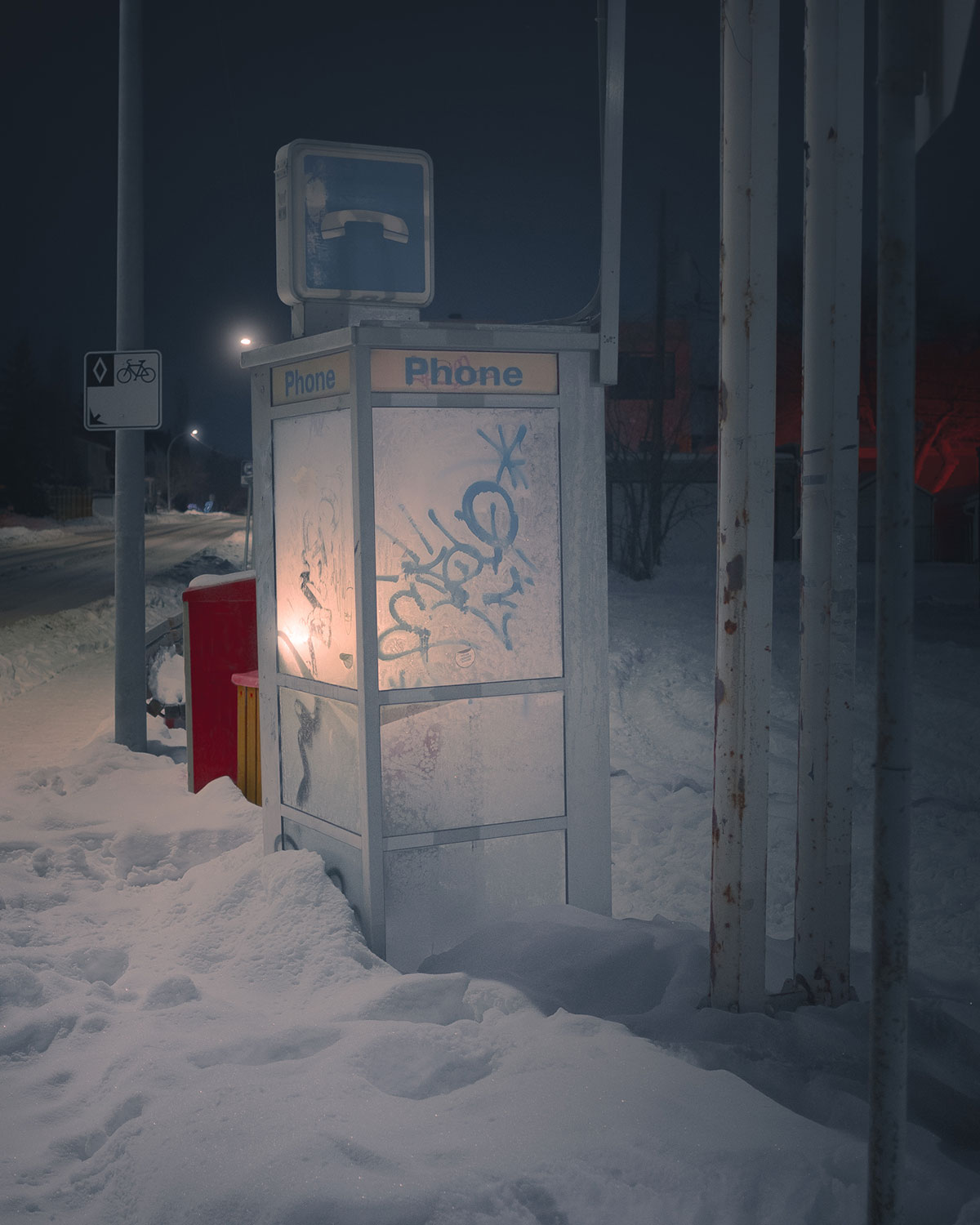
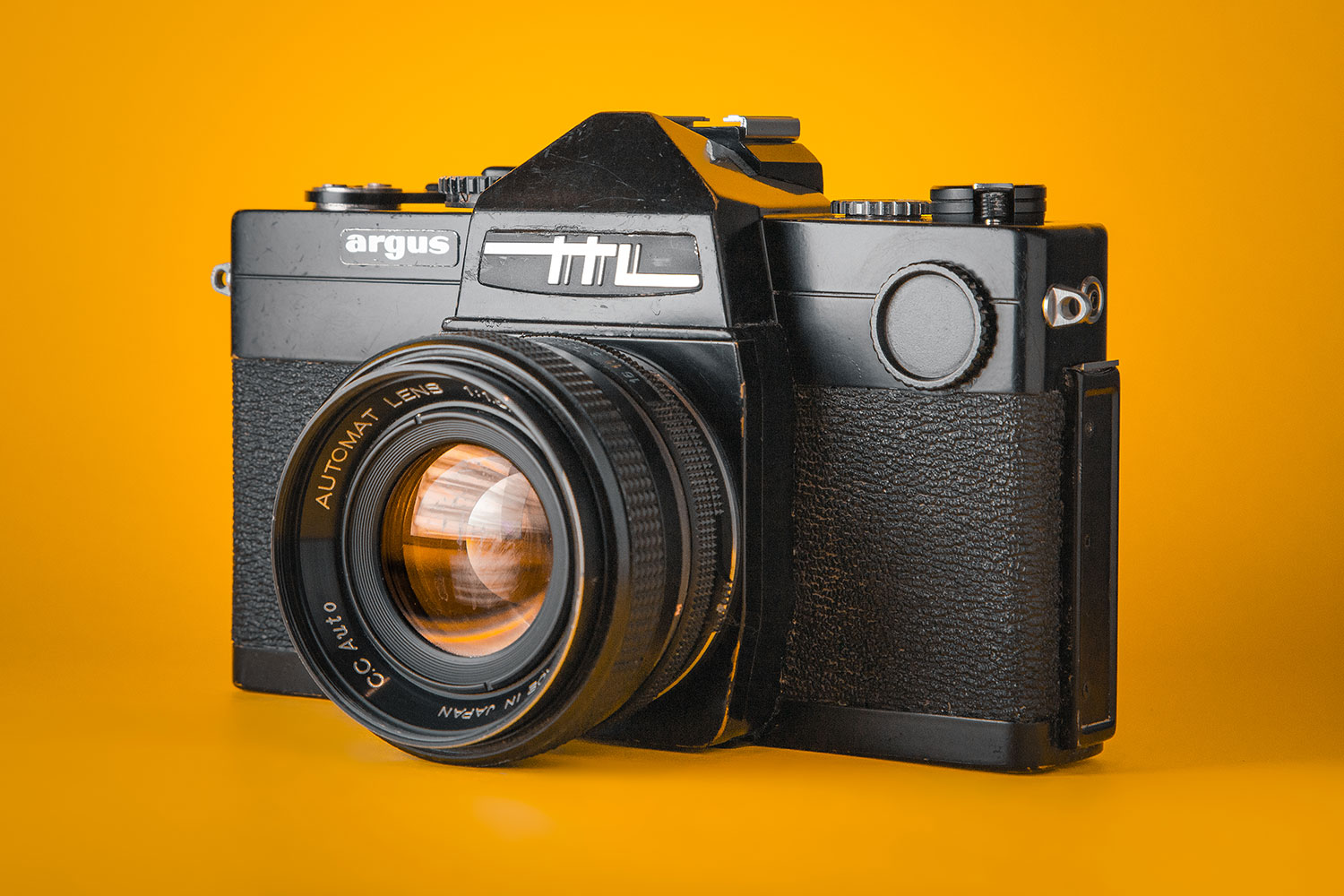



RD Gerdes
October 20, 2021 @ 2:53 pm
What unique work! I’m really drawn to the cold, night images and your composition is great. You have a very distinct and enjoyable style. Thanks for sharing your work!
Khürt L Williams
October 20, 2021 @ 5:35 pm
Thank you for sharing your photography journey from film to digital to Fuji. I think your night photography images are stunning and inspiring. Perhaps you will offer a course on your process?
Jesse Yardley
October 20, 2021 @ 6:09 pm
I’d like to thank the team at Fuji X Passion for the opportunity to share my work and have it included alongside some of the best photography content I’ve seen. You guys are doing an amazing job. Kudos!
fujixpassion
October 22, 2021 @ 12:14 pm
Hi Jesse! It was a huge honour for us to publish your incredible work. It’s unique, and it was a massive breath of fresh air.
We are the ones who must thank you for all your availability with this collaboration, and for the dedication you put into this article.
Jan Novotny
October 20, 2021 @ 7:15 pm
Thank you for a nice and inspiring article. My father’s camera was Praktika MTL5, Carl Zeiss, I still have it my possession. It has defined the standard I expect from a camera until now.
Michael Mesh
October 20, 2021 @ 9:11 pm
So nice and inspiring photos!
Thank you for sharing!
Thomas Guerrero
October 20, 2021 @ 9:55 pm
Beautiful shots and great story!
Nanou
October 27, 2021 @ 8:19 pm
I also have a nice vintage camera sitting on my bookshelf, it’s an Agfa Silette SL from the early 60s that belonged to my parents. I also have a Nikon N2000 from the early 90s which was my first “real” camera. I know shoot on a Fuji XT-2 which has also reignited my passion for photography after a 20+ year hiatus (during which time I owned Nikon DSLRs which really did not inspire me at all). It is amazing how similar the body of the Fuji is to my old Nikon. Love them both to pieces, in fact so much that I am not doing a Master’s in Photography (in my 50s).
mike reitsma
February 27, 2022 @ 7:01 am
Jesse,
Great photography!
I grew up in Minneapolis, which shares the same cold winter evenings. I could hear the snow crunching. You capture the mood and feeling perfectly.
FYI, your dad’s camera is now considered a rare model by Argus collectors in the USA.
Mike Reitsma
Burlingame, California